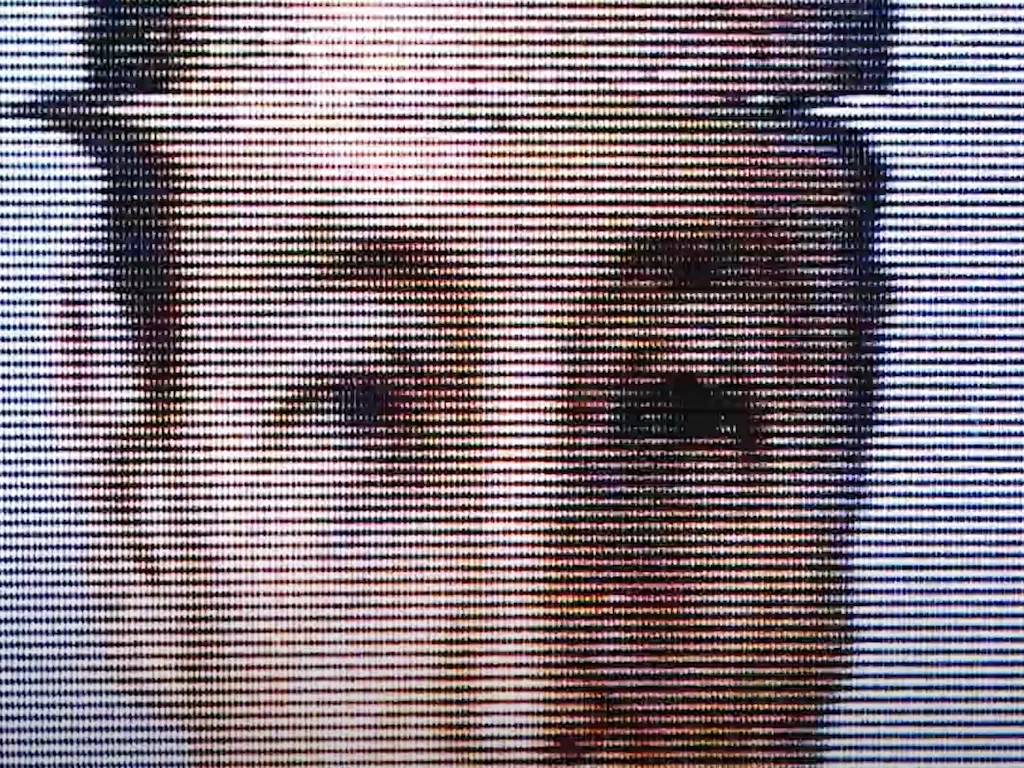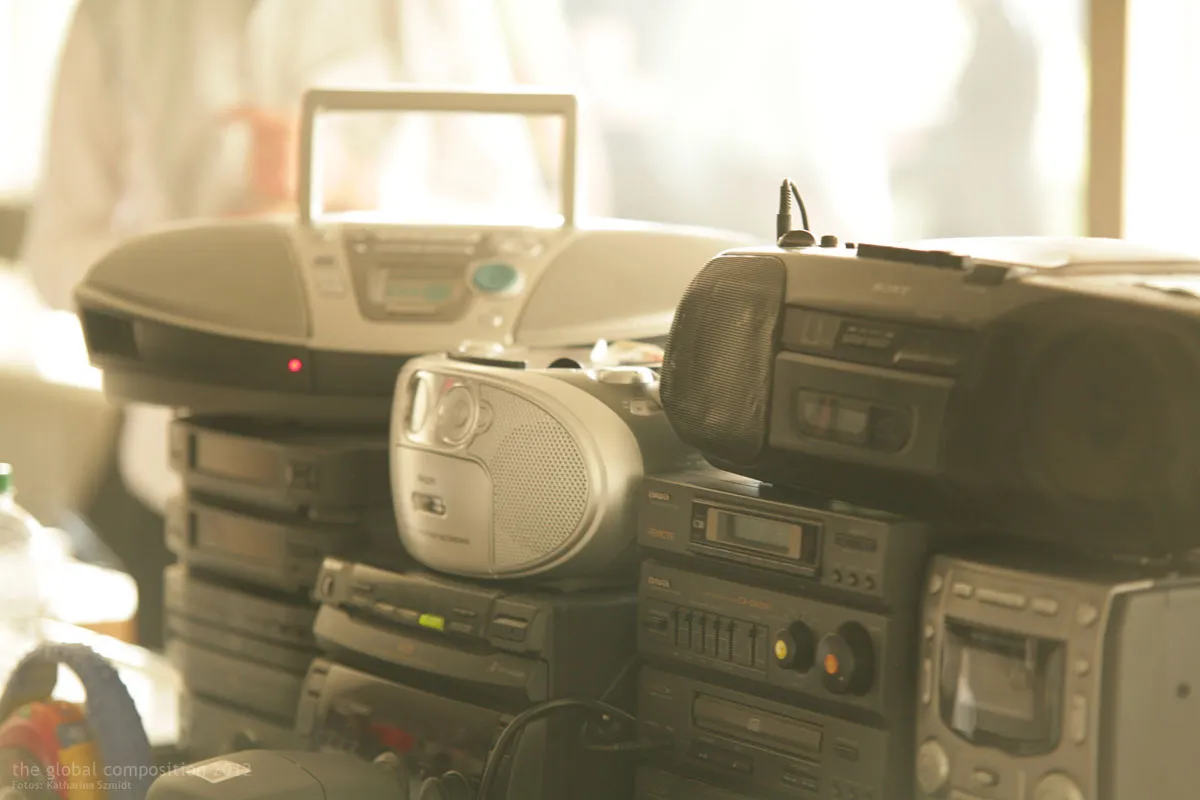Yannick Hofmann (*1988 in Offenbach a. M., Germany) lives and works as an artist and researcher in Karlsruhe. As the artistic director of the intelligent.museum project since 2020, he collaborates with a team of software developers and museum visitor research experts, pushing the boundaries of hybrid formats and applications for the future of museums. Having spent almost a decade at ZKM | Center for Art and Media, he co-directed their artistic research and production department before joining Fraunhofer in 2023.
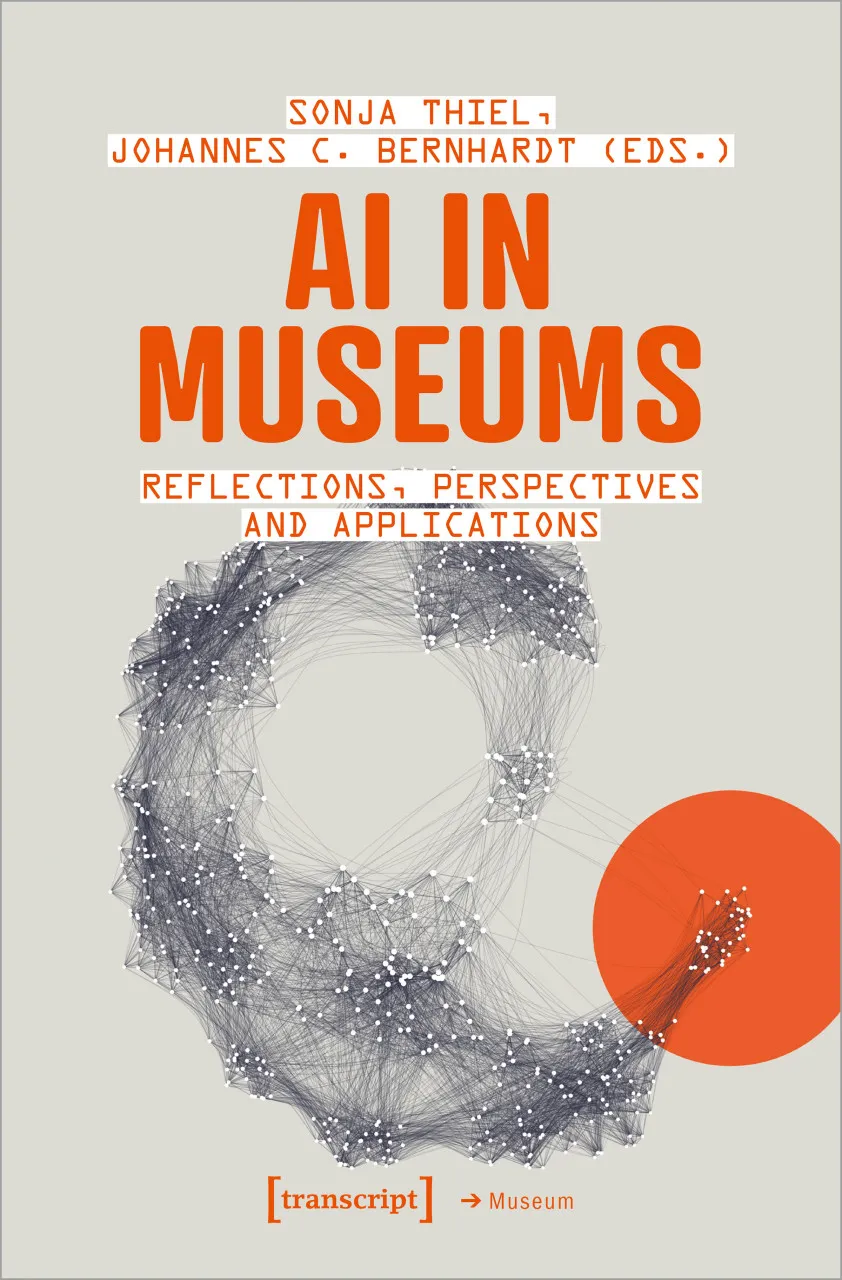
Yannick Hofmann’s interactive installation Wishing Well was produced between 2022 and 2023 as part of the intelligent.museum project. It is an artwork that uses generative AI to transform the pronounced dreams, wishes, and fantasies of exhibition visitors into images. A urinal serves as a wishing well into which visitors speak their ideas in their respective language. With the help of a text-to-image model, these prompts are transformed into images that are projected into the urinal for a few seconds. The title of the work, Wishing Well, refers to the folkloric motif of the wishing well, which serves across cultures as an interface for the fulfilment of wishes and dreams. Central aspects addressed by the interactive installation are the use of the latest AI technologies in art and the accompanying well-known art-historical dilemma, namely, the challenged identity of art in the face of new technical tools. Furthermore, the installation invites visitors to actively use innovative AI technologies themselves so as to strengthen their own media competence through direct interaction with the artwork. In this way, Wishing Well is representative of the intelligent.museum project, within whose framework it was developed. The intelligent.museum project is a practical research and development project conducted in collaboration between the ZKM | Center for Art and Media Karlsruhe and the Deutsches Museum Nuremberg. The project seeks to monitor the latest developments in the field of AI and translate them into interactive experiences for museum visitors. What sets this project apart is the inclusion of software developers in the project team, thus facilitating agile and dynamic development of state-of-the-art software tools and interactive art installations. Through this interdisciplinary approach, the project aims to engage the general public in active discussions about AI and build a foundation of experience and knowledge for future advancements in this field.
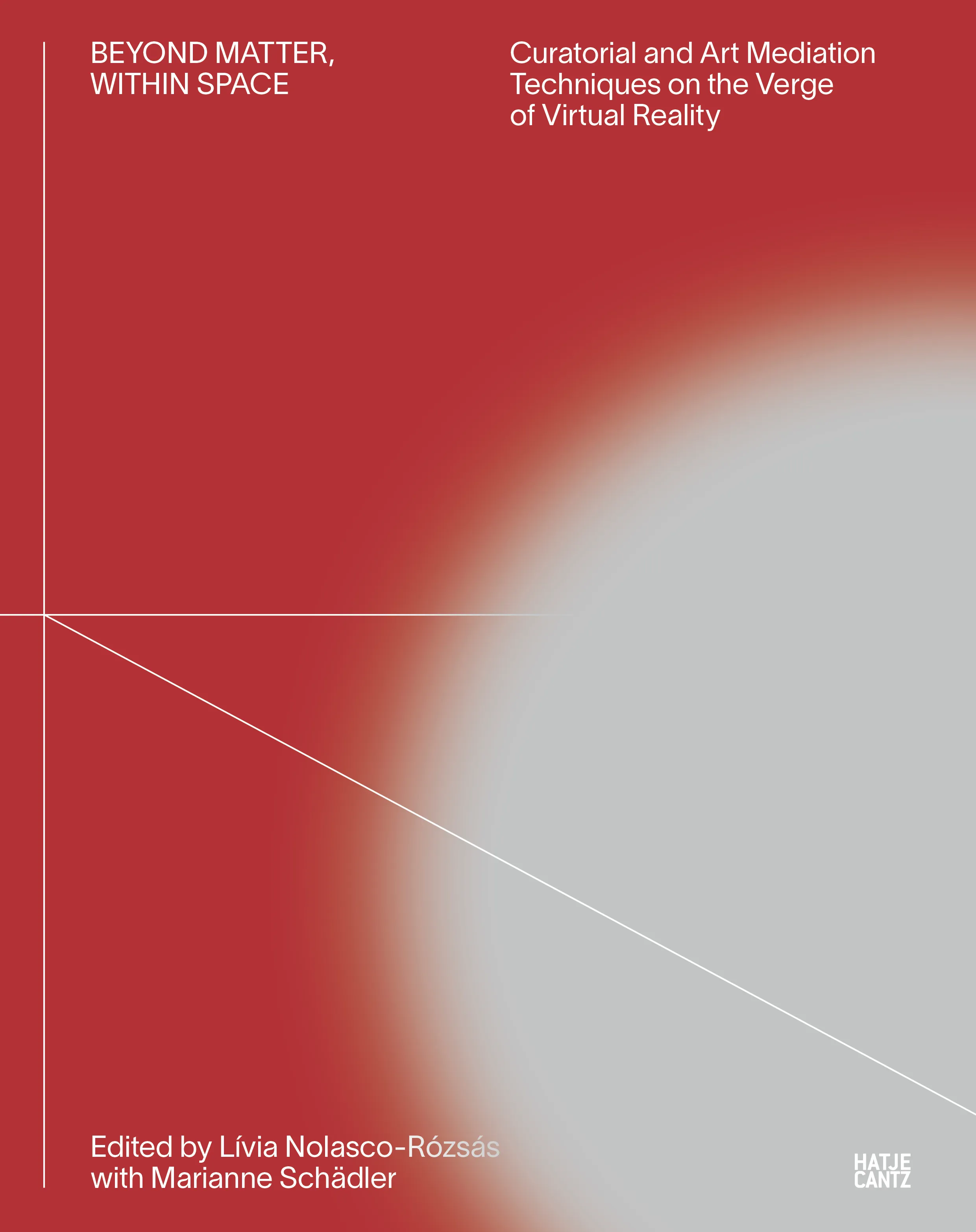
The intelligent.museum project, conducting practice-based research and developing artistic prototypes for the museum of the future since 2020 at ZKM | Center for Art and Media Karlsruhe and the Deutsches Museum Nuremberg, offers several examples of the use of artificial intelligence techniques to interact with museum visitors. When seamlessly integrated into exhibition spaces, they can offer visitors a more conversational and immersive museum experience that can carry over into virtual space. A speculative perspective on the hybrid museum experience of the future is thus emerging. Recent developments in generative AI suggest that interactive experiences could soon be dialogically co-written by users in real time, transforming them from consumers into prosumers. Museums are likely to become even more responsive to visitors and able to adapt according to their needs and wishes. This texts discusses opportunities, risks, and implications of these prospects.
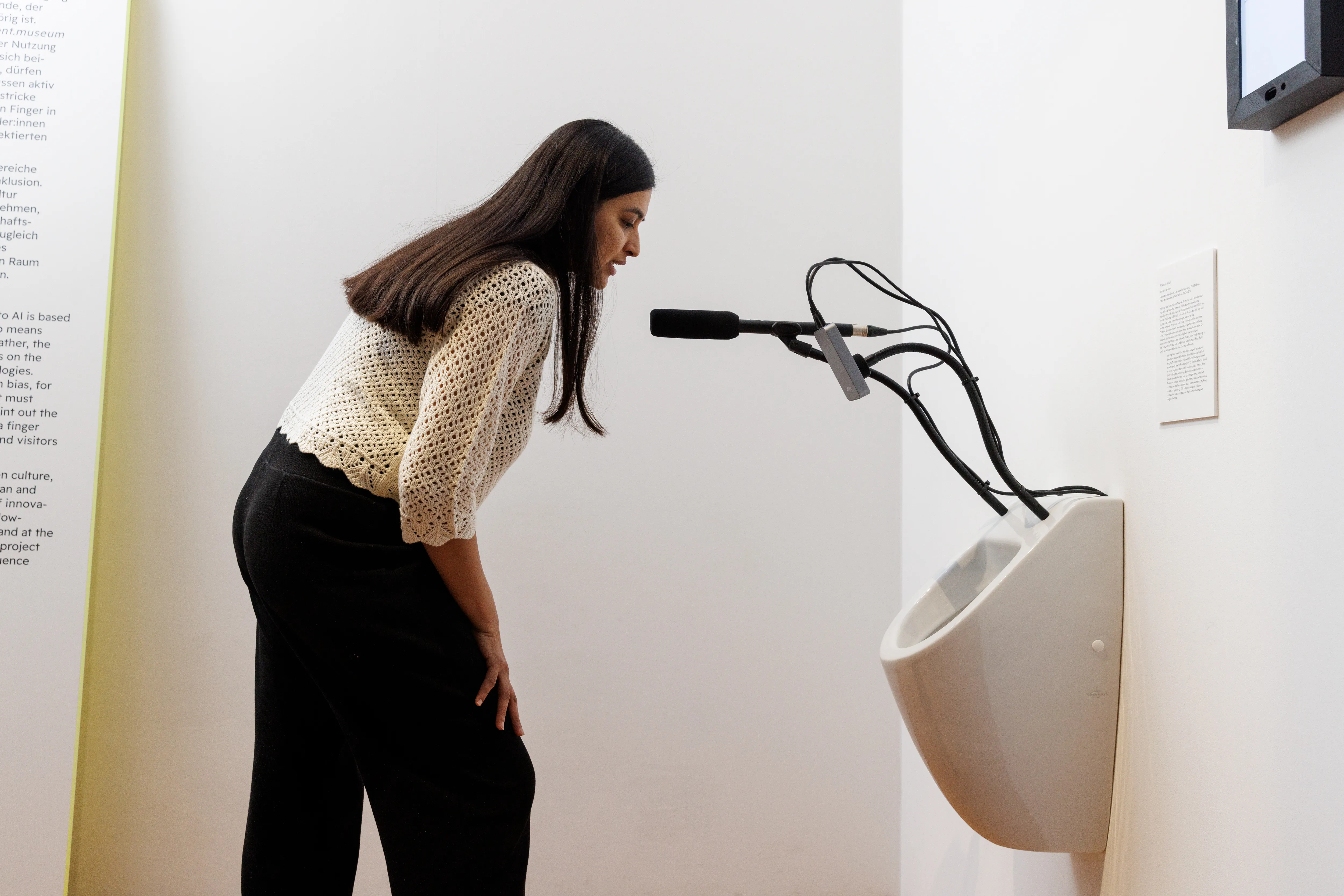
Wishing Well uses AI to transform verbally expressed dreams, wishes and fantasies of exhibition visitors into images. The installation echoes Marcel Duchamp's well-known ready-made Fountain (1917). He identified a urinal as an art object and signed it under a pseudonym, thus challenging the prevailing definition and initiating a debate about what can and cannot be considered art. Today, we are debating this question again: generative AI models can perform artistic tasks such as writing, making music, and painting. This major change in cultural production has an impact on the future role and self-image of artists.
Funded by the Digital Culture Programme of the Kulturstiftung des Bundes (German Federal Cultural Foundation). Funded by the Beauftragte der Bundesregierung für Kultur und Medien (Federal Government Commissioner for Culture and the Media).
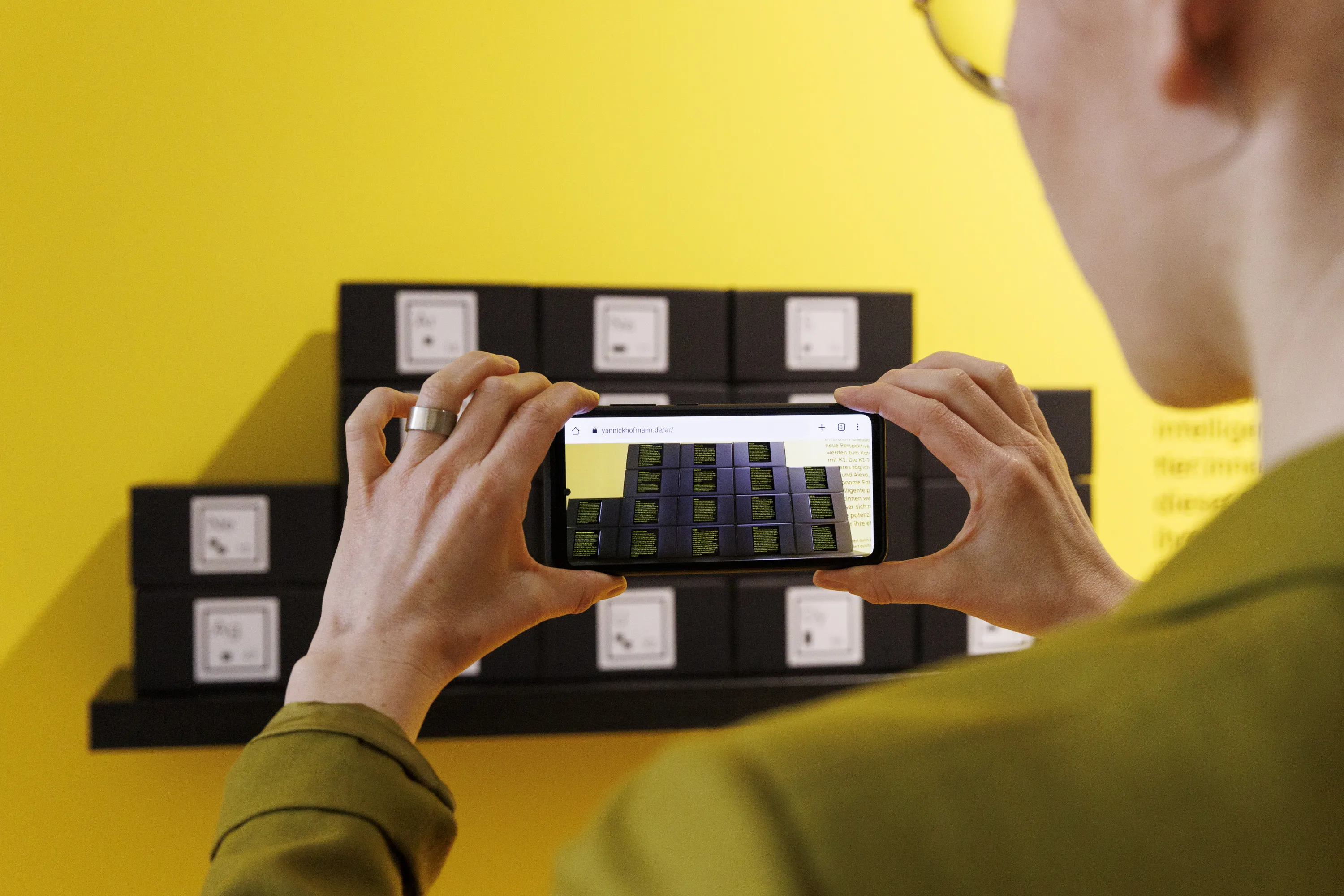
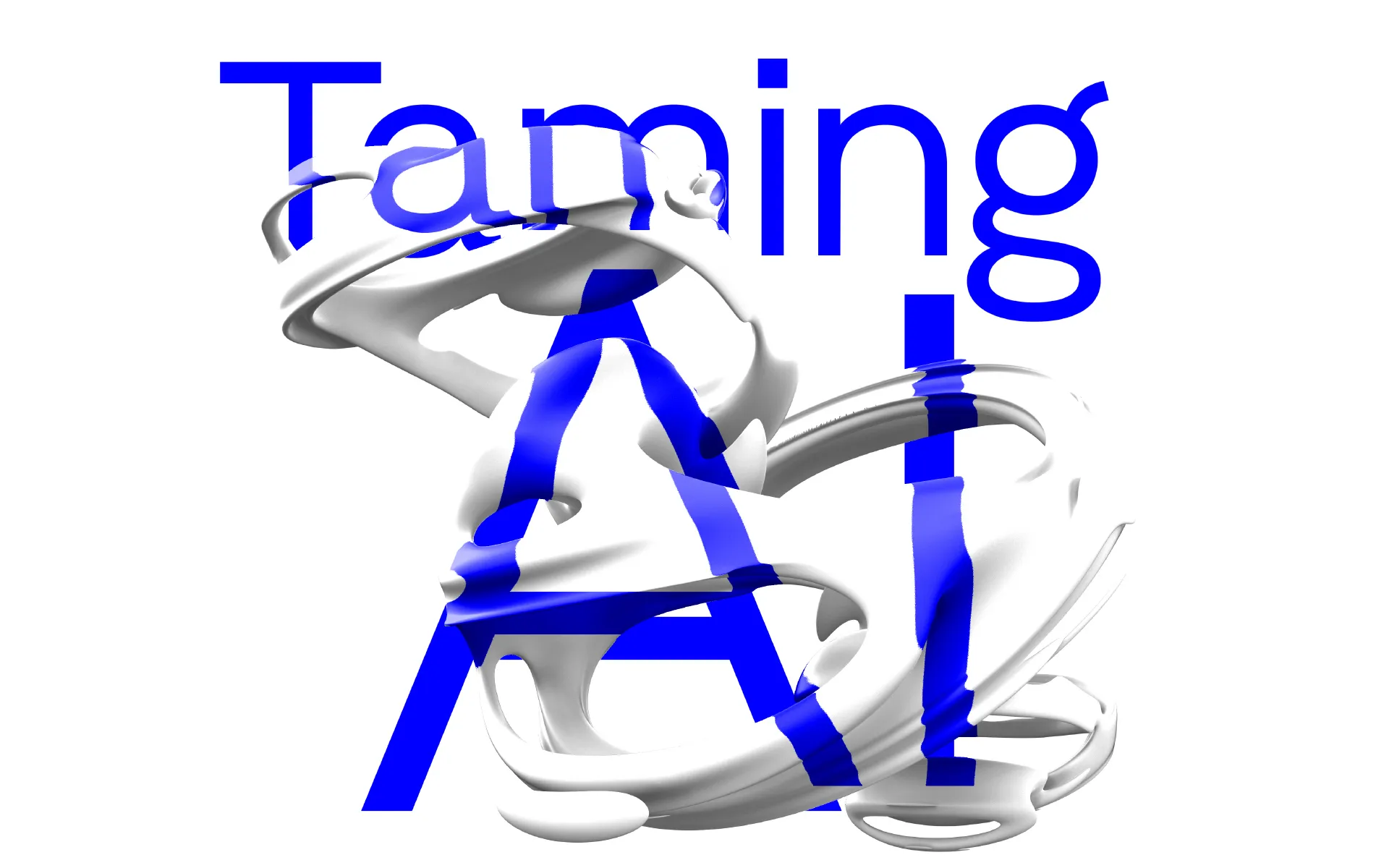
The five-part online panel Taming AI on art and AI is dedicated to the various areas in which Artificial Intelligence (AI) technologies are currently relevant for cultural institutions and not least for society. In five panel discussions, artists, curators, scientists, activists and developers meet and focus on current discourses on AI. The artistic and curatorial fields of application of AI are elaborated and the challenges and opportunities that AI technologies offer for the respective field are discussed.
Funded by the Digital Culture Programme of the Kulturstiftung des Bundes (German Federal Cultural Foundation). Funded by the Beauftragte der Bundesregierung für Kultur und Medien (Federal Government Commissioner for Culture and the Media).
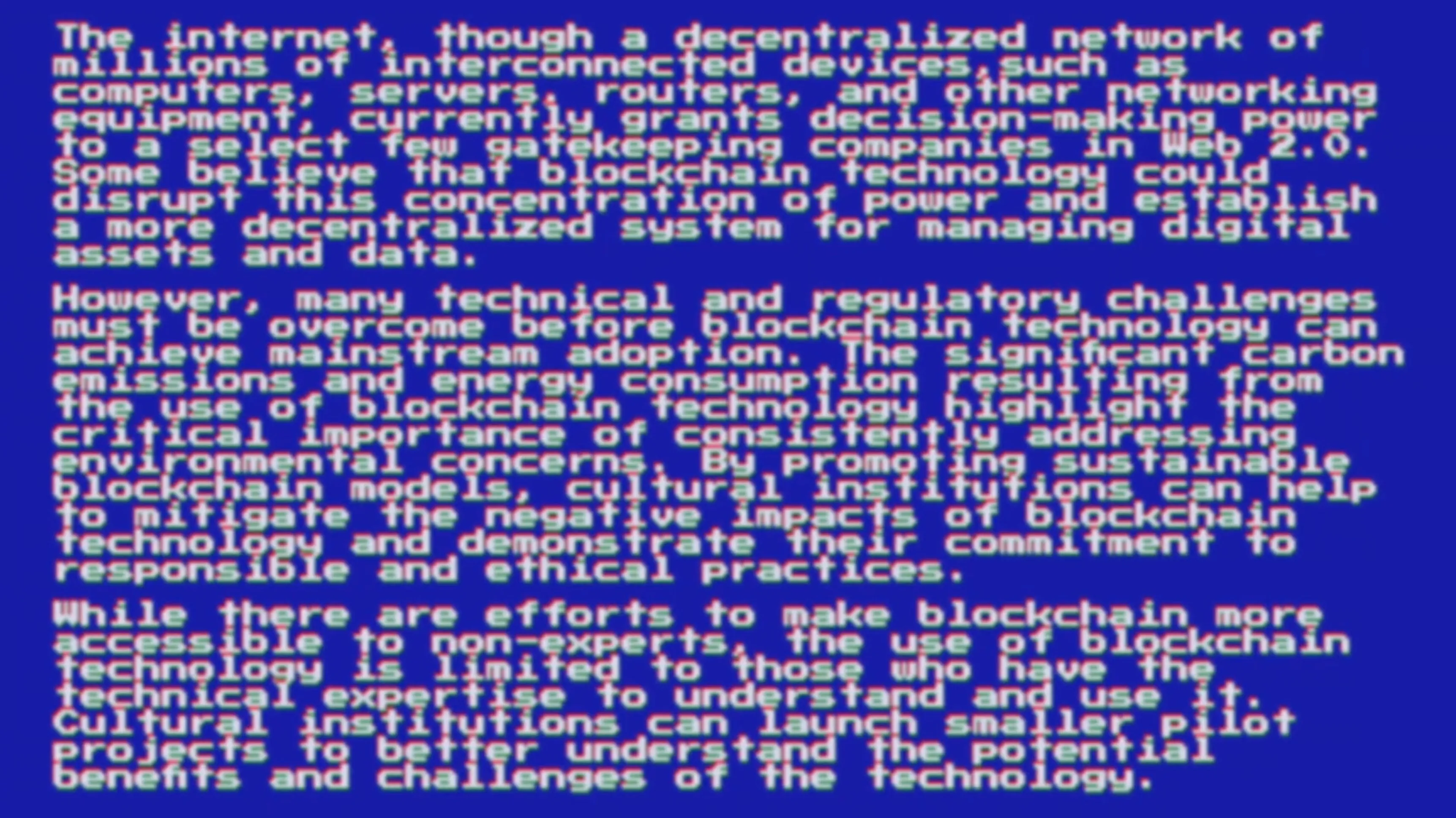
Today, many cultural institutions seek to transcend traditional power structures. Given the social and structural barriers that prevent certain communities from accessing cultural programs, exhibitions, and collections, engaging with a wider and more diverse audience has gained greater significance. By adopting participatory and co-creative approaches, cultural institutions involve diverse communities and integrate their perspectives into the sector.
The current ideological climate in the cultural sector favors openness, transparency, and participation, making it highly receptive to Web3 claims and the promises of blockchain technology. As institutions gradually embrace the digital age, they must strike a balance between responsible and sustainable actions and the enthusiastic adoption of new technologies driven by hype narratives.
The internet, though a decentralized network of millions of interconnected devices, such as computers, servers, routers, and other networking equipment, currently grants decision-making power to a select few gatekeeping companies in Web 2.0. Some believe that blockchain technology could disrupt this concentration of power and establish a more decentralized system for managing digital assets and data.
However, many technical and regulatory challenges must be overcome before blockchain technology can achieve mainstream adoption. The significant carbon emissions and energy consumption resulting from the use of blockchain technology highlight the critical importance of consistently addressing environmental concerns. By promoting sustainable blockchain models, cultural institutions can help to mitigate the negative impacts of blockchain technology and demonstrate their commitment to responsible and ethical practices.
While there are efforts to make blockchain more accessible to non-experts, the use of blockchain technology is limited to those who have the technical expertise to understand and use it. Cultural institutions can launch smaller pilot projects to better understand the potential benefits and challenges of the technology.
Ultimately, the impact of blockchain on society will be determined by the way it will get implemented and the social forces that will drive its development. Rather than relying solely on top-down approaches driven by experts or big tech, the communitarian approach seeks to involve communities in activities, such as co-creation workshops, participatory design sessions, and community consultations. Cultural institutions should democratize the development and implementation of new technologies by providing resources, expertise, and support to local communities. This will promote a more inclusive and equitable cultural sector and empower communities to play an active role in shaping the future of technology."
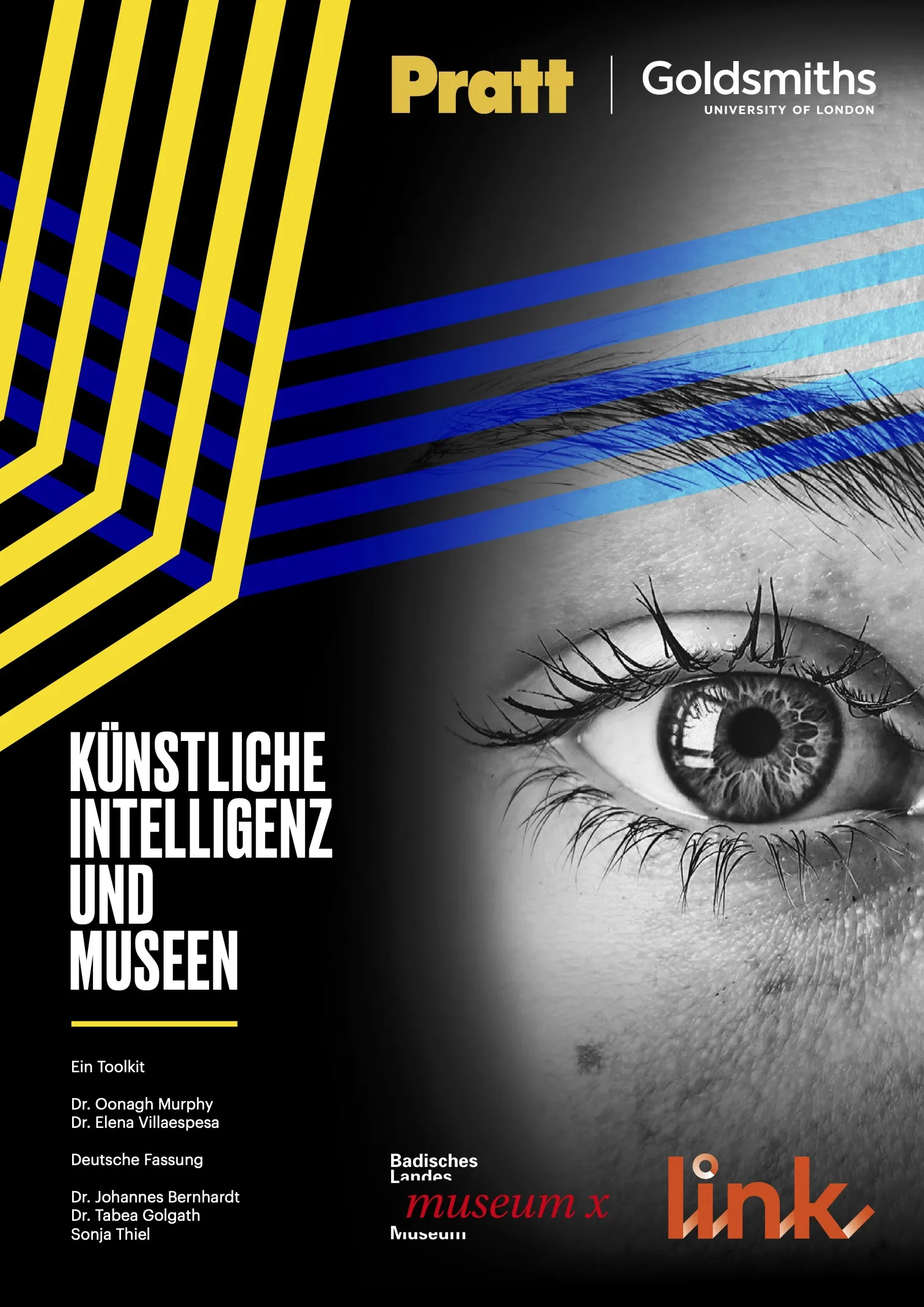
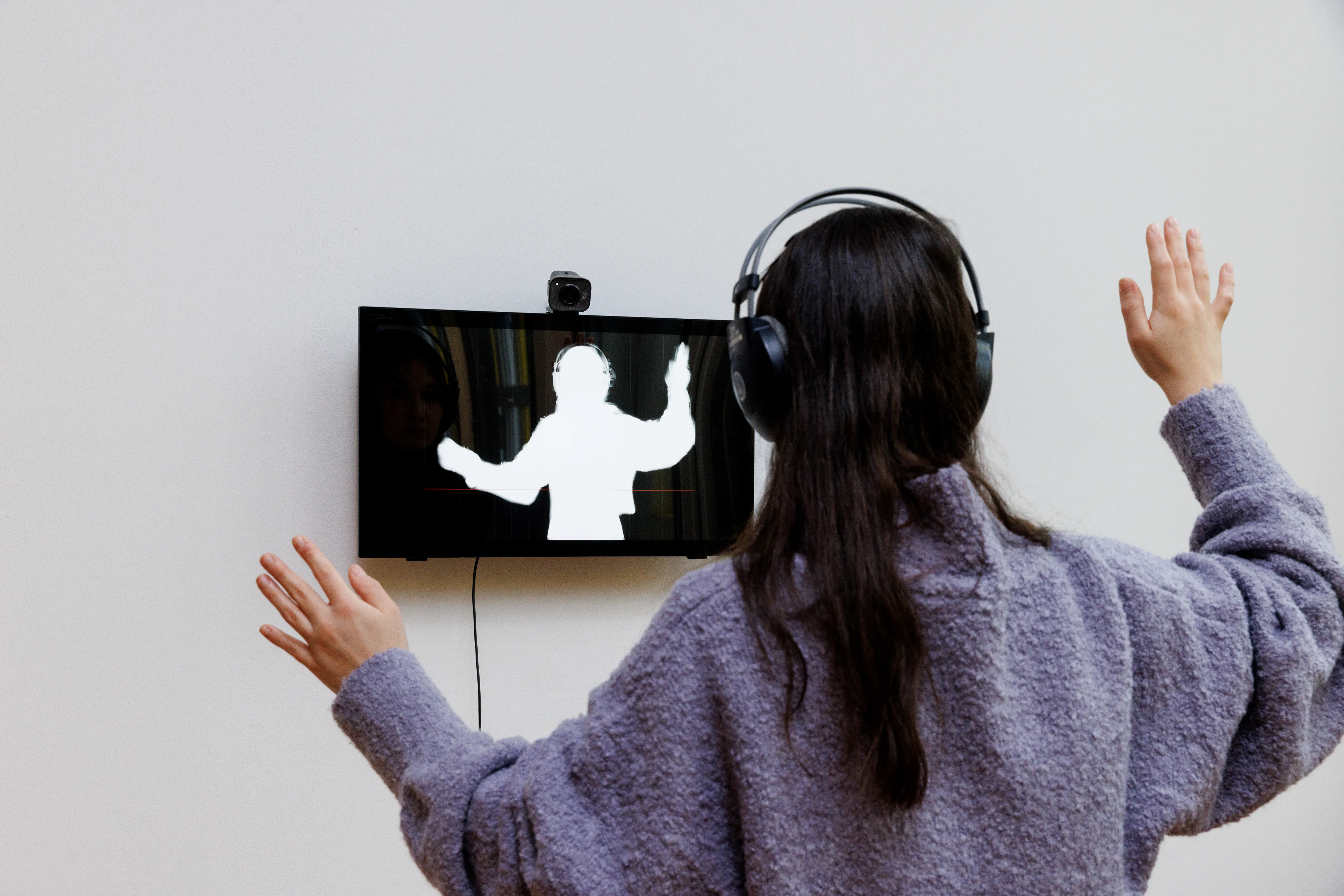
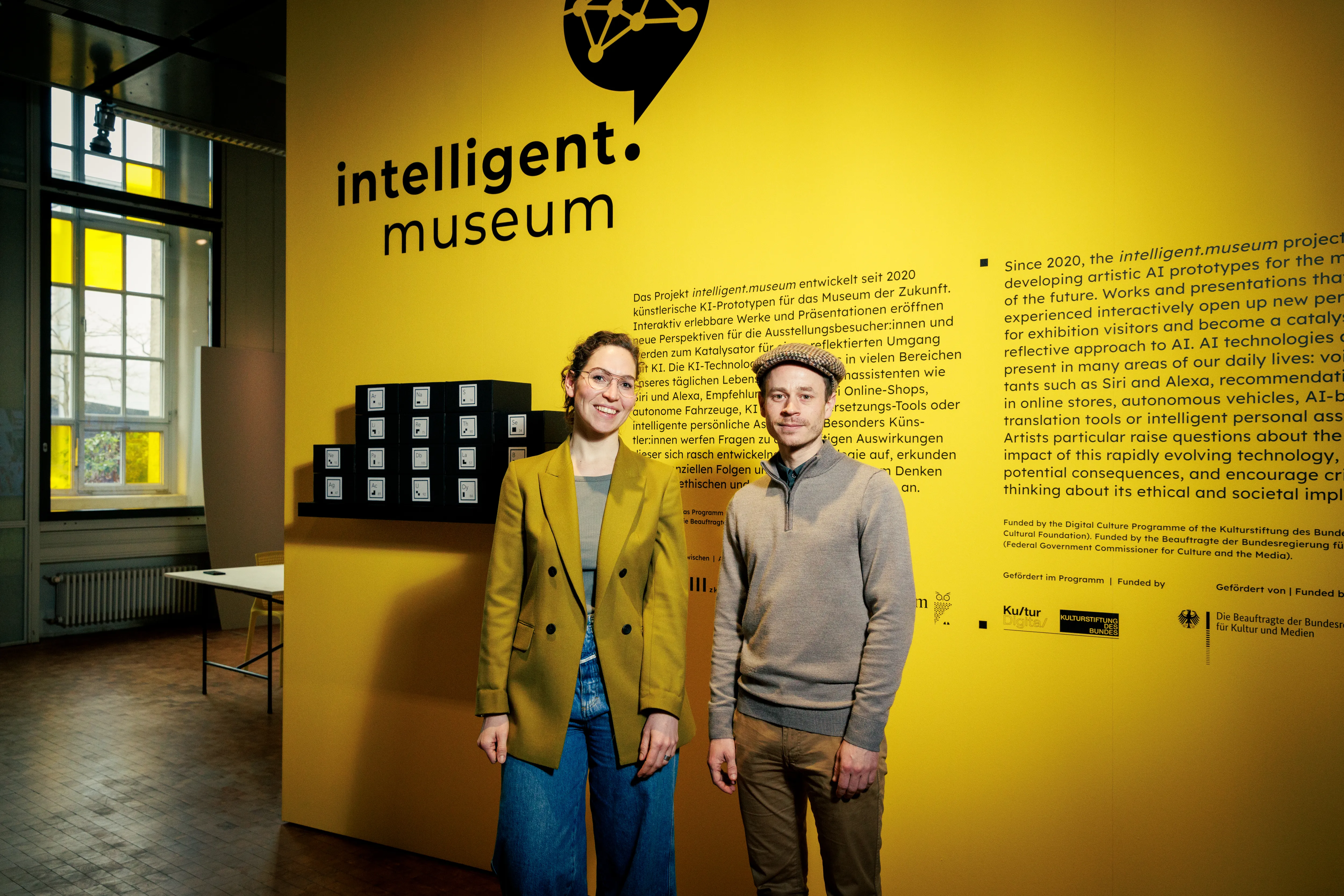
ZKM | Center for Art and Media Karlsruhe (DE)
In the exhibition works and presentations that can be experienced interactively open up new perspectives for exhibition visitors and become a catalyst for a reflective approach to AI. AI technologies are already present in many areas of our daily lives: voice assistants such as Siri and Alexa, recommendation systems in online stores, autonomous vehicles, AI-based translation tools or intelligent personal assistants. Artists particular raise questions about the future impact of this rapidly evolving technology, explore its potential consequences, and encourage critical thinking about its ethical and societal implications.
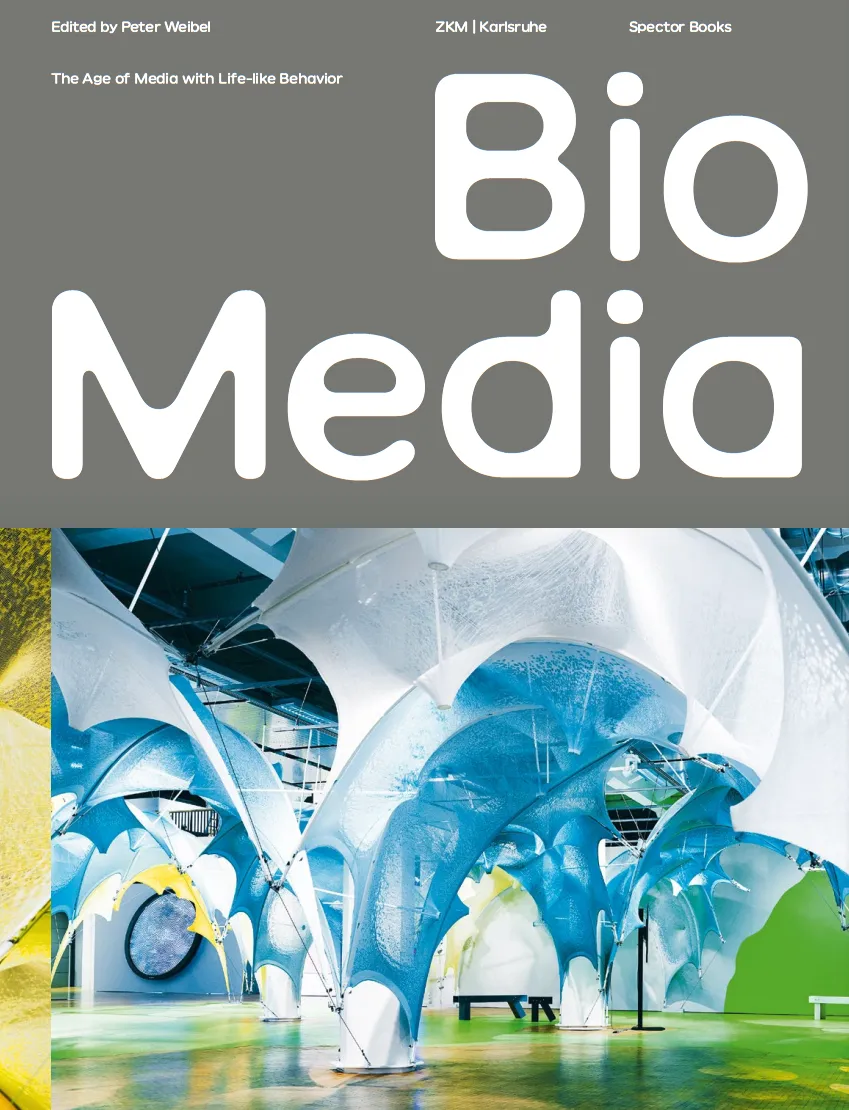
About the book:
The research exhibition BioMedia: The Age of Media with Life-like Behavior at ZKM | Center for Art and Media Karlsruhe presents works that intersect the realms of art, science, and technology. The media systems on show, which range from digital, computer-generated, and computer-simulated systems to complex adaptive robots and interactive installations, simulate various different aspects of life beyond movement and raise fundamental questions about the interaction between human and non-human beings and what inorganic life might mean in the future. The term BioMedia or biomimetic media is used here to refer to media that exhibit life-like forms of behaviour. Over sixty artists have contributed works illustrating the exhibition themes. The book accompanying the show focuses on the artworks, which are described in detail in richly illustrated texts.
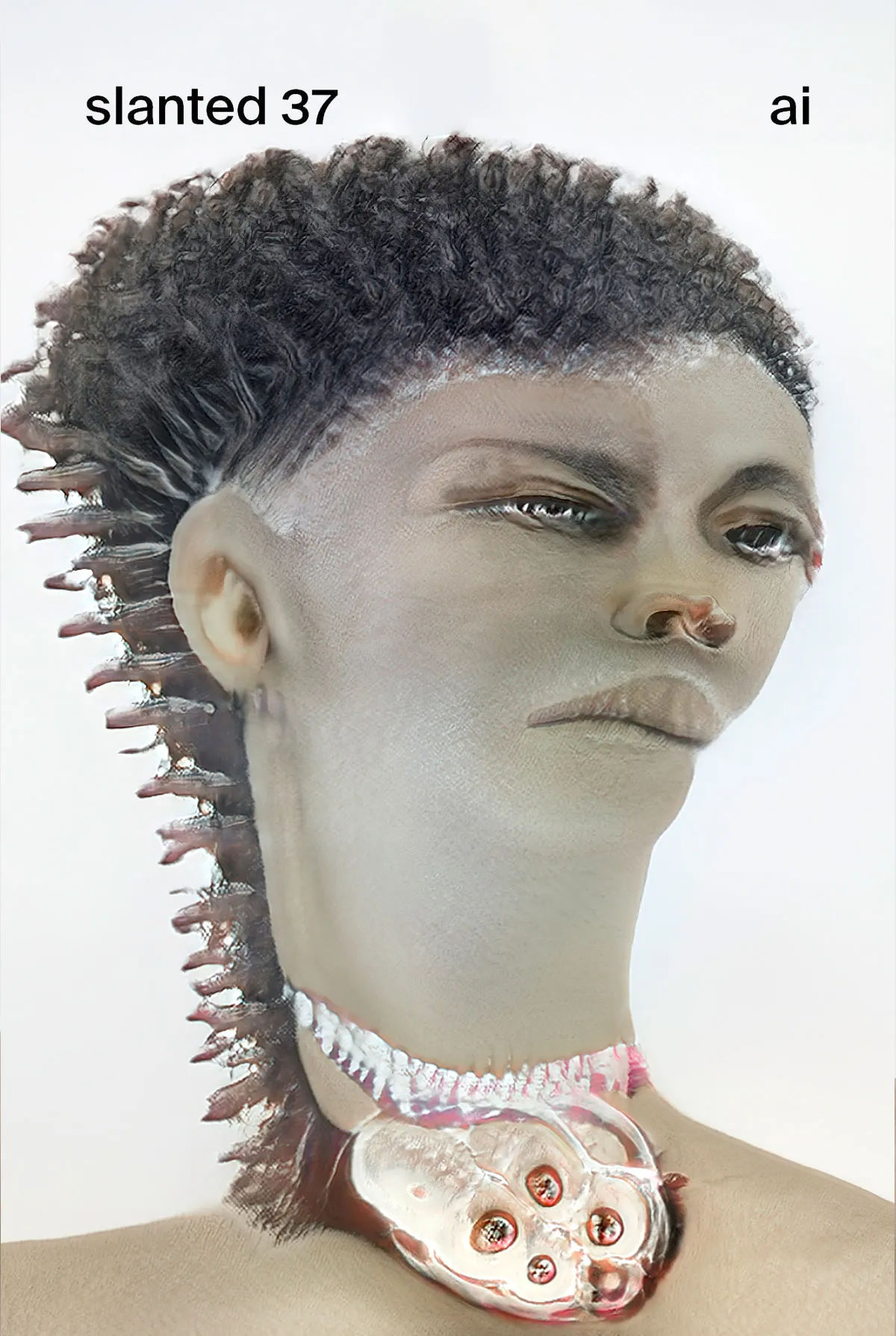
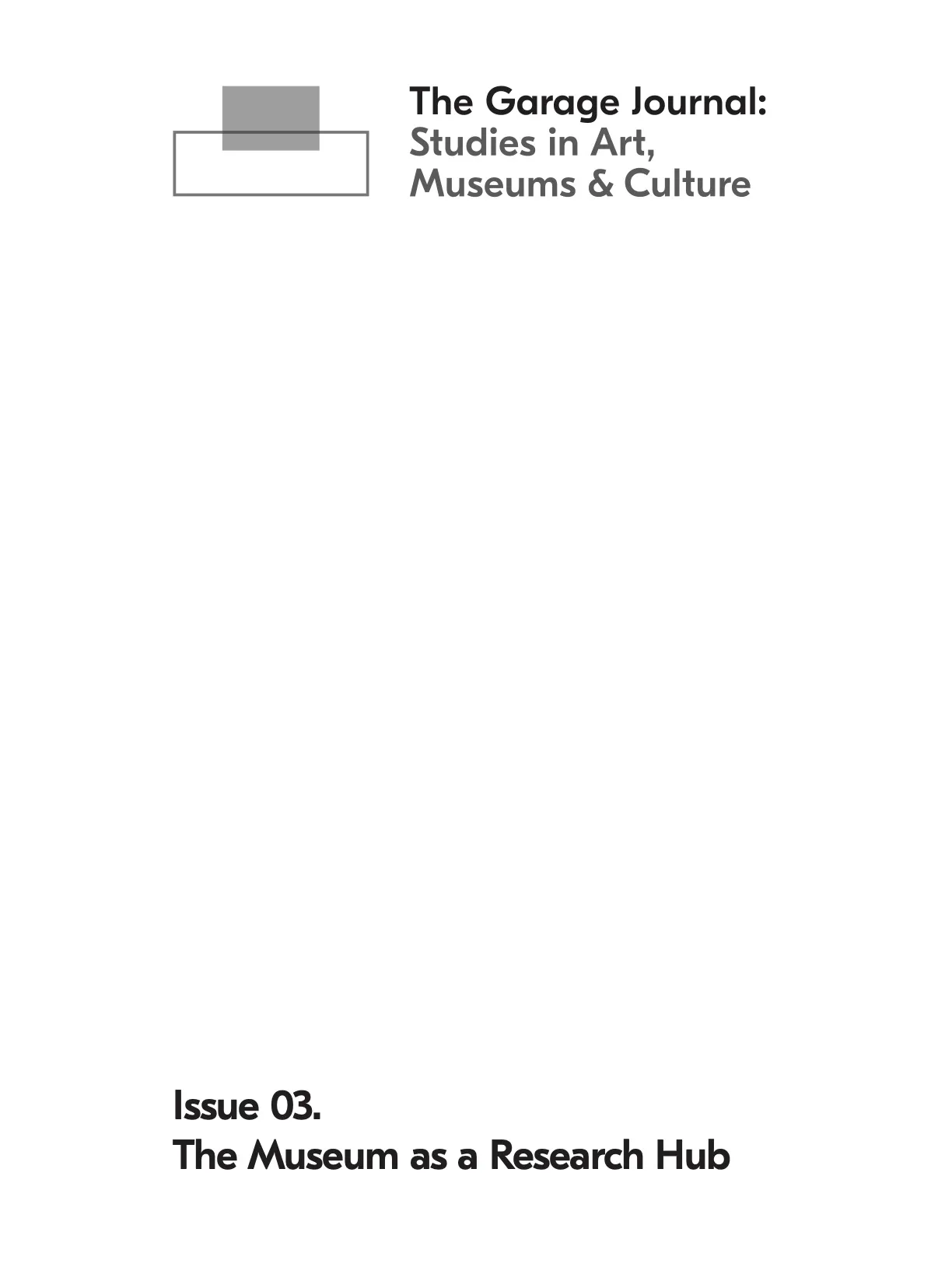
The essay introduces a new line of research at the ZKM | Center for Art and Media Karlsruhe that examines the role and experiments with museum applications of information technology, specifically artificial intelligence (AI) and extended reality technologies (e.g., augmented, mixed, and virtual realities). Currently, two projects at the ZKM have taken up the initiative to start practice-based research: Beyond Matter and intelligent.museum. These projects are discussed in this essay with the aim of demonstrating that the museum is being successively transformed into a cognitive system of human and non-human actors. Drawing on the institutional experience of the ZKM, we present a new approach towards the notion of the museum: one that takes computation into consideration.
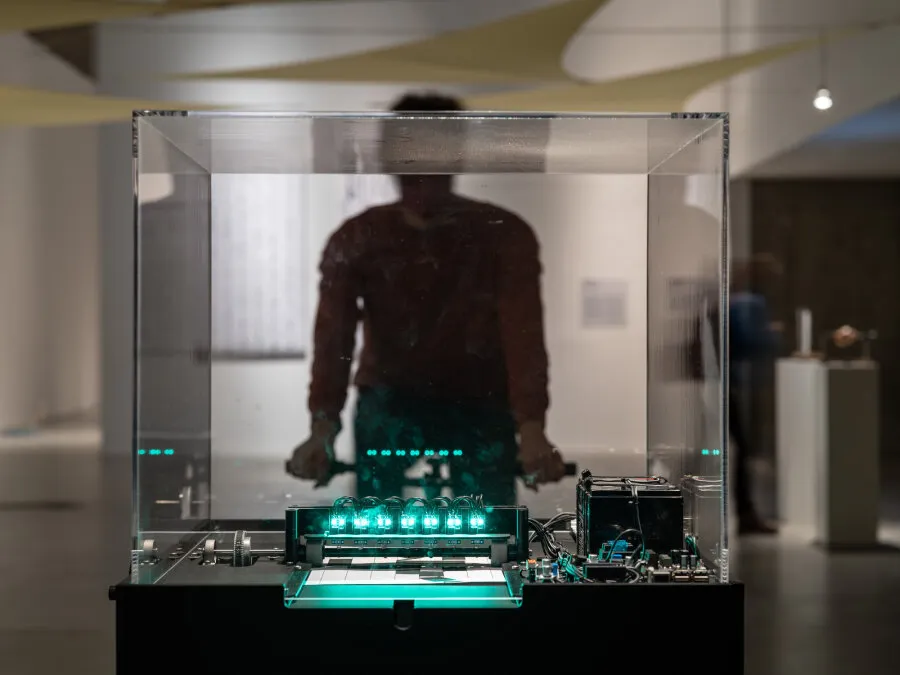
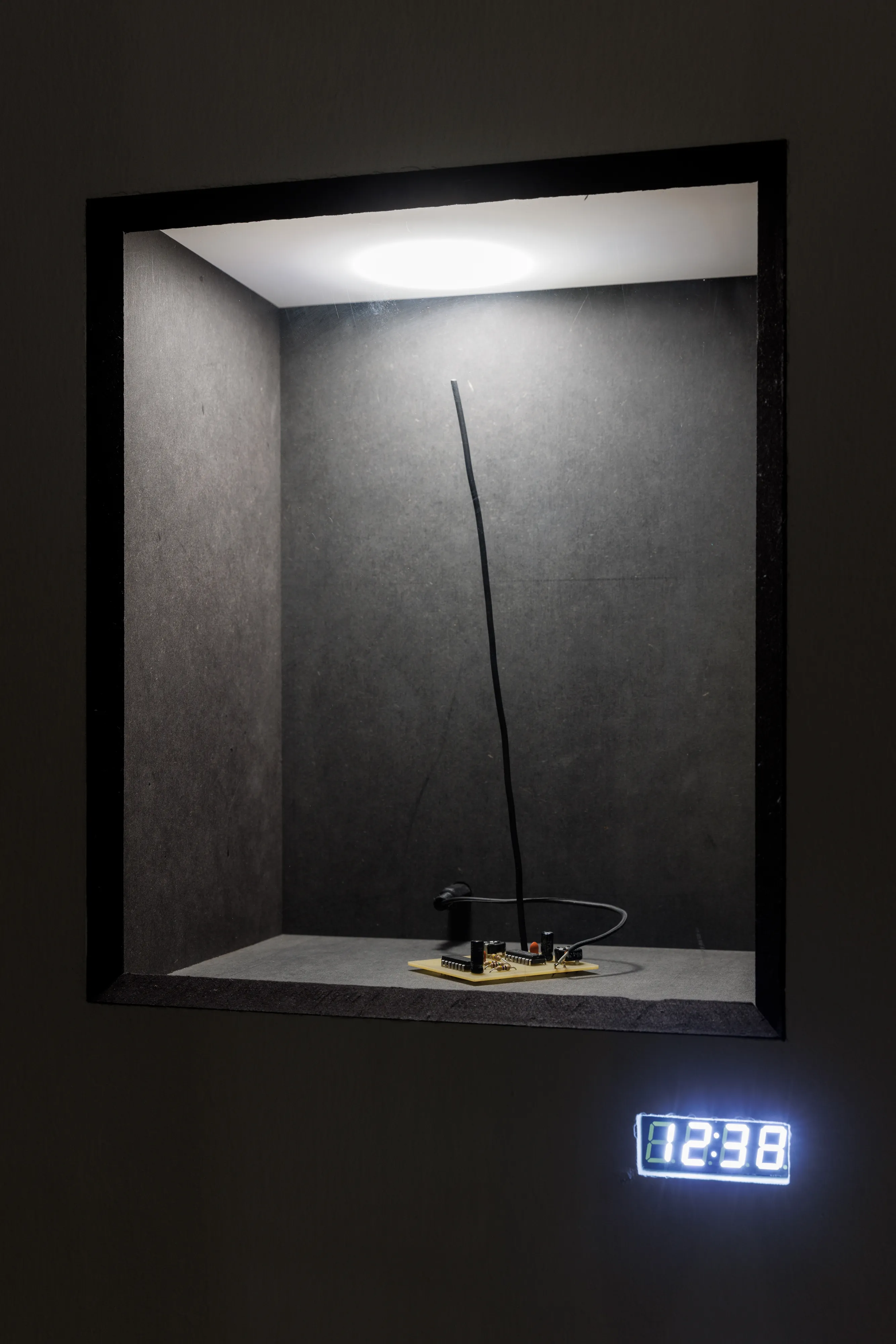
Software: GPT-Neo, Overdub (Descript)
Botcasts – a combination of the terms "bot" and "podcast" – are AI-generated radio broadcasts that take topics from real news sources in areas ranging from politics to culture to entertainment and continue them in the form of AI-generated speculative fiction put together by an algorithm. They are generated live every day using live news from all around the world. Google News is searched daily for trending news in order to ensure the seed material is from reliable sources and fake news sites are pre-filtered. It should also reliably provide open access and non-partisan news, which was important in the artwork development process.
The algorithm then "reads" the article and generates an "intelligent" summary using the newspaper3k module of Python. This summary is used as a prompt for the GPT-Neo model, which creates the news stories for the Botcast. While there are many text generation machine learning modules available, GPT-Neo is used here because of its open-source nature. It can easily be substituted with another ML model. In comparison to other models, such as the Python module aitextgen, GPT-Neo generated the most coherent output.
The generated news article is transformed into a radio broadcast by the software Descript in the next step. Descript is a voice cloning software that can be trained on individual voices and is able to recreate any text in the persons' voices. The voice for Botcast is trained on the voices of the artists. Once the audio version of the Botcast is generated, it is saved and sent to an analog radio receiver in the exhibition space using an FM transmitter. A 7-bit LED light display counts down the time to the next broadcast. In 48 broadcasting sessions a day on every day of the week, 17,472 Botcasts are produced within a year.
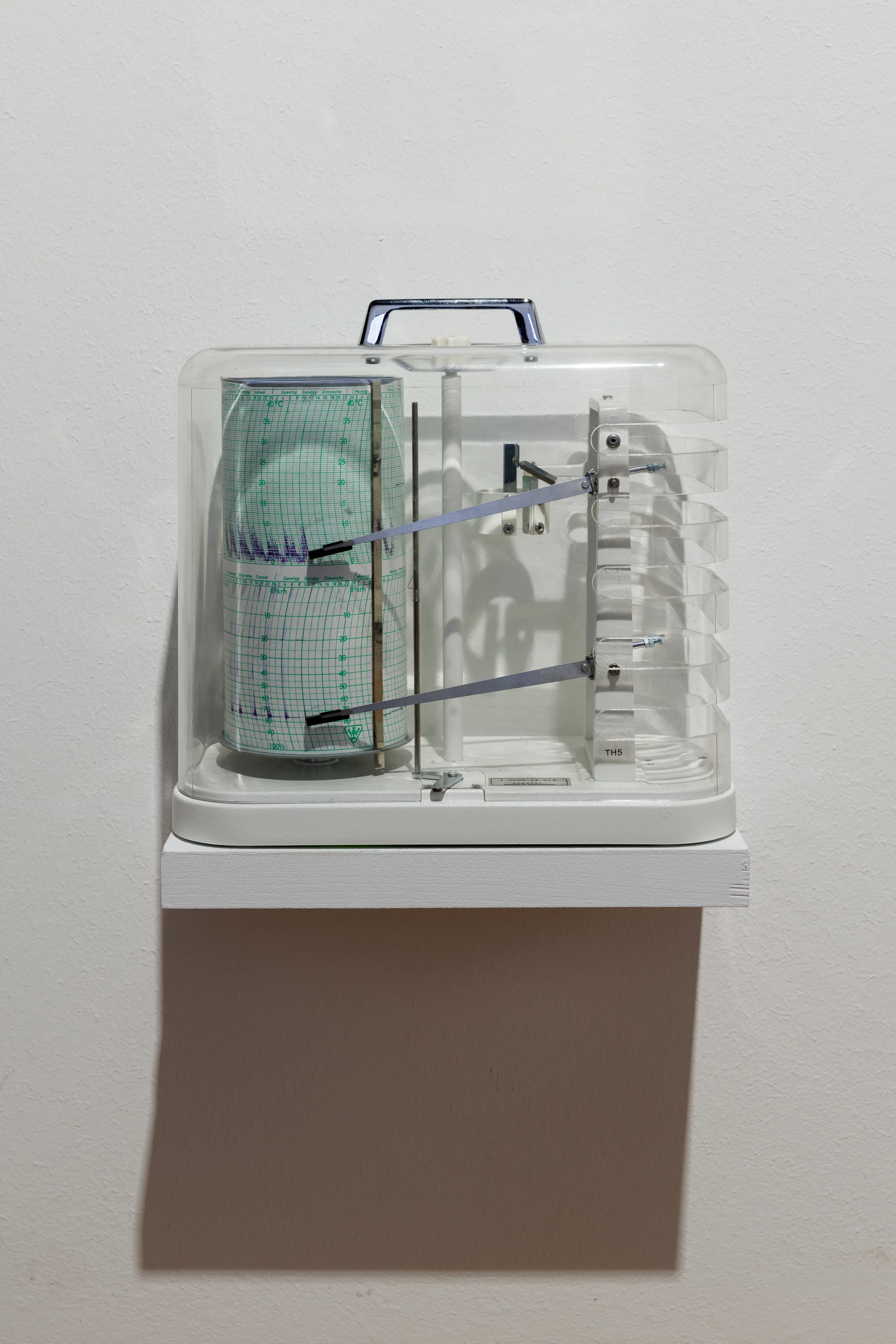
Sensor integration: Paul Bethge
Funded by the Digital Culture Programme of the Kulturstiftung des Bundes (German Federal Cultural Foundation). Funded by the Beauftragte der Bundesregierung für Kultur und Medien (Federal Government Commissioner for Culture and the Media).
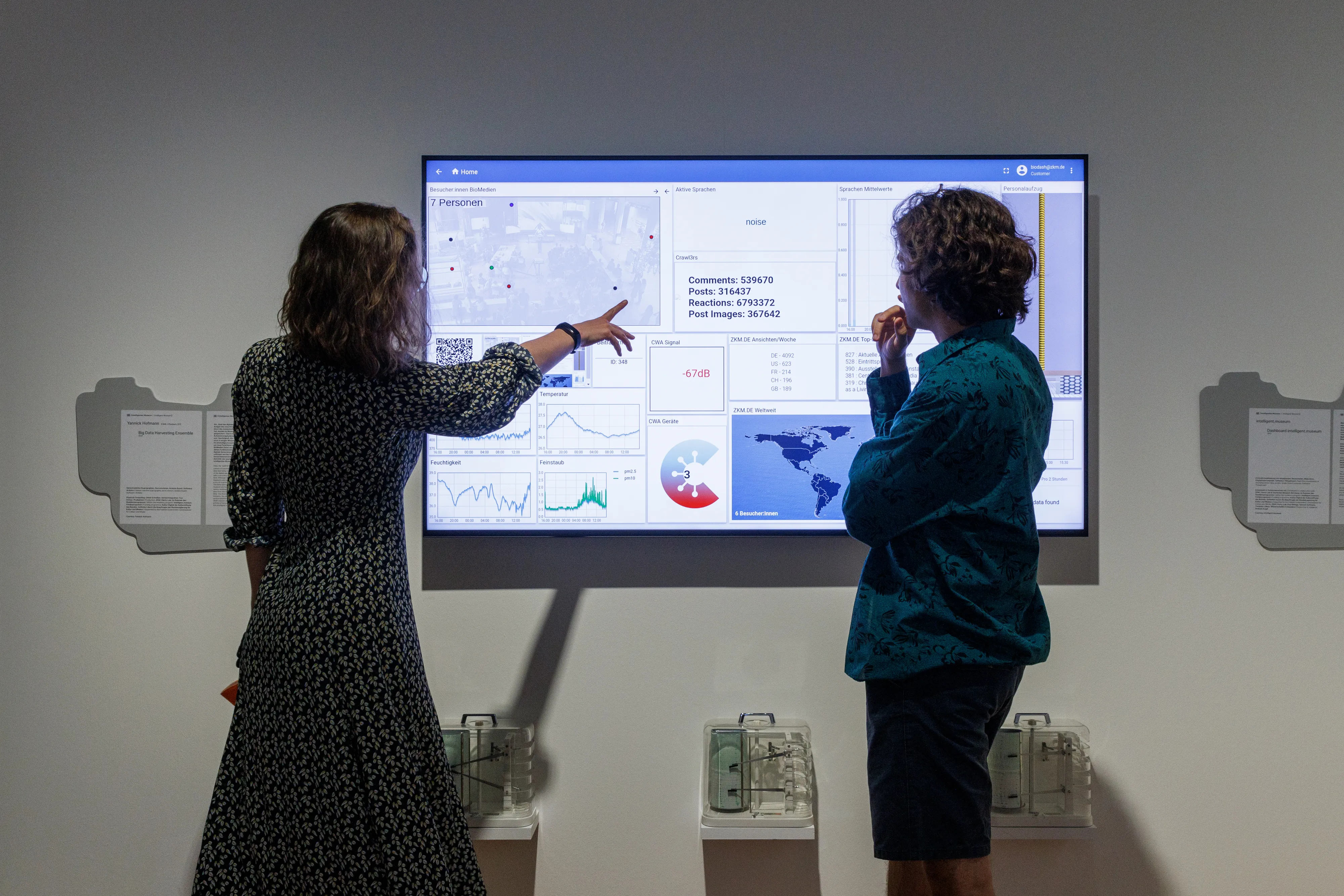
Funded by the Digital Culture Programme of the Kulturstiftung des Bundes (German Federal Cultural Foundation). Funded by the Beauftragte der Bundesregierung für Kultur und Medien (Federal Government Commissioner for Culture and the Media).
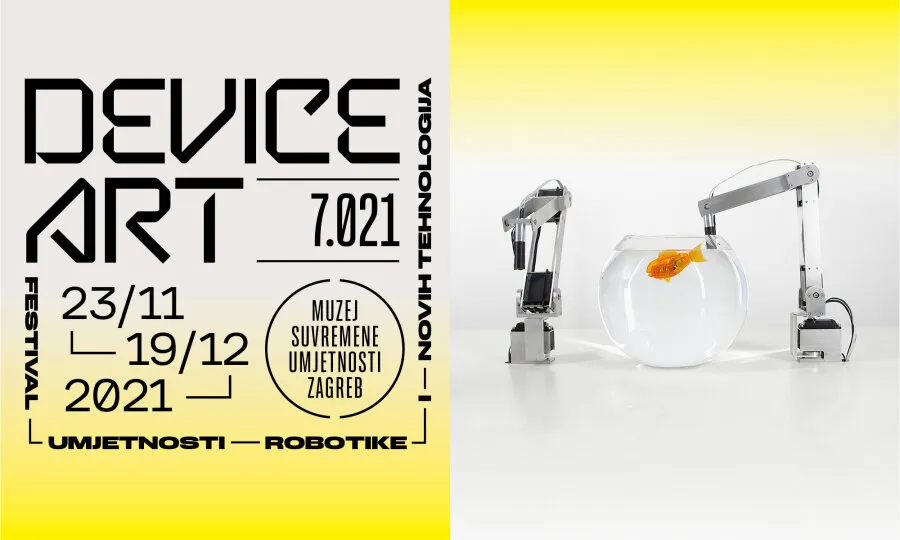
Museum of Contemporary Art, Zagreb (HR) & Pogon Jedinstvo, Zagreb (HR)
As this year's festival concept, "Machine Does Not Give Change" invites us to rethink our increasingly intimate relationship with technology in a time of constant unpredictability and profound changes. An artwork asks us to scream in front of a mirror to interact with it (and release some of the stress and negative energy), while a simple walk through the Novi Zagreb neighborhood takes us on an expedition into the sea of electromagnetic sound – fascinating and frightening at the same time. Dream machines, ballerinas from the future, space whiskers and a robotic sculptor-ecologist – all to be found on the charming, humorous, rebellious Device_art playground.
This year the festival is developed in collaboration with a group of curators from ZKM | Center for Art and Media Karlsruhe and is conceived as a dialogue between the German and Croatian "device art" scene. This is in line with the long tradition of the festival and its previous editions dedicated to the Japanese, Canadian, Californian, Czech and Slovenian scene, as well as the global tech-art tendencies presented in its last iteration. As one of the leading international festivals that has been focusing on technology in contemporary art since 2004, Device_art in its new edition continues to push boundaries of artistic media through witty and provocative works and concepts that question the potentials, limitations and impacts of technology on everyday life.
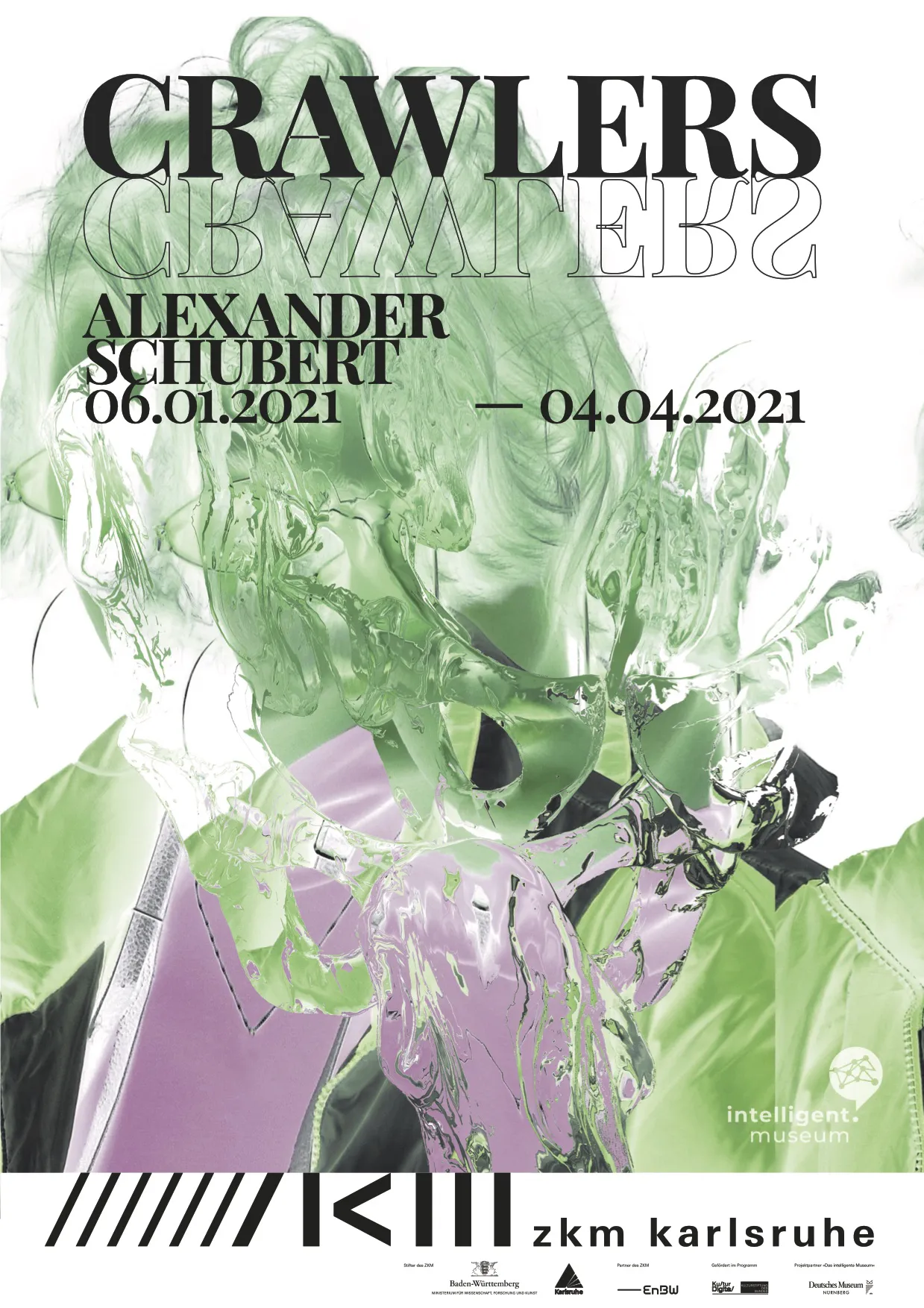
ZKM | Center for Art and Media Karlsruhe (DE)
Bot Programming: Steffen Lohrey
AI Data Transformation: Konrad Krenzlin
Front End Programming: Yeray Navarro Suarez
Account Handling: Juan Jaramillo Lleras
Funded by the Digital Culture Programme of the Kulturstiftung des Bundes (German Federal Cultural Foundation). Funded by the Beauftragte der Bundesregierung für Kultur und Medien (Federal Government Commissioner for Culture and the Media).
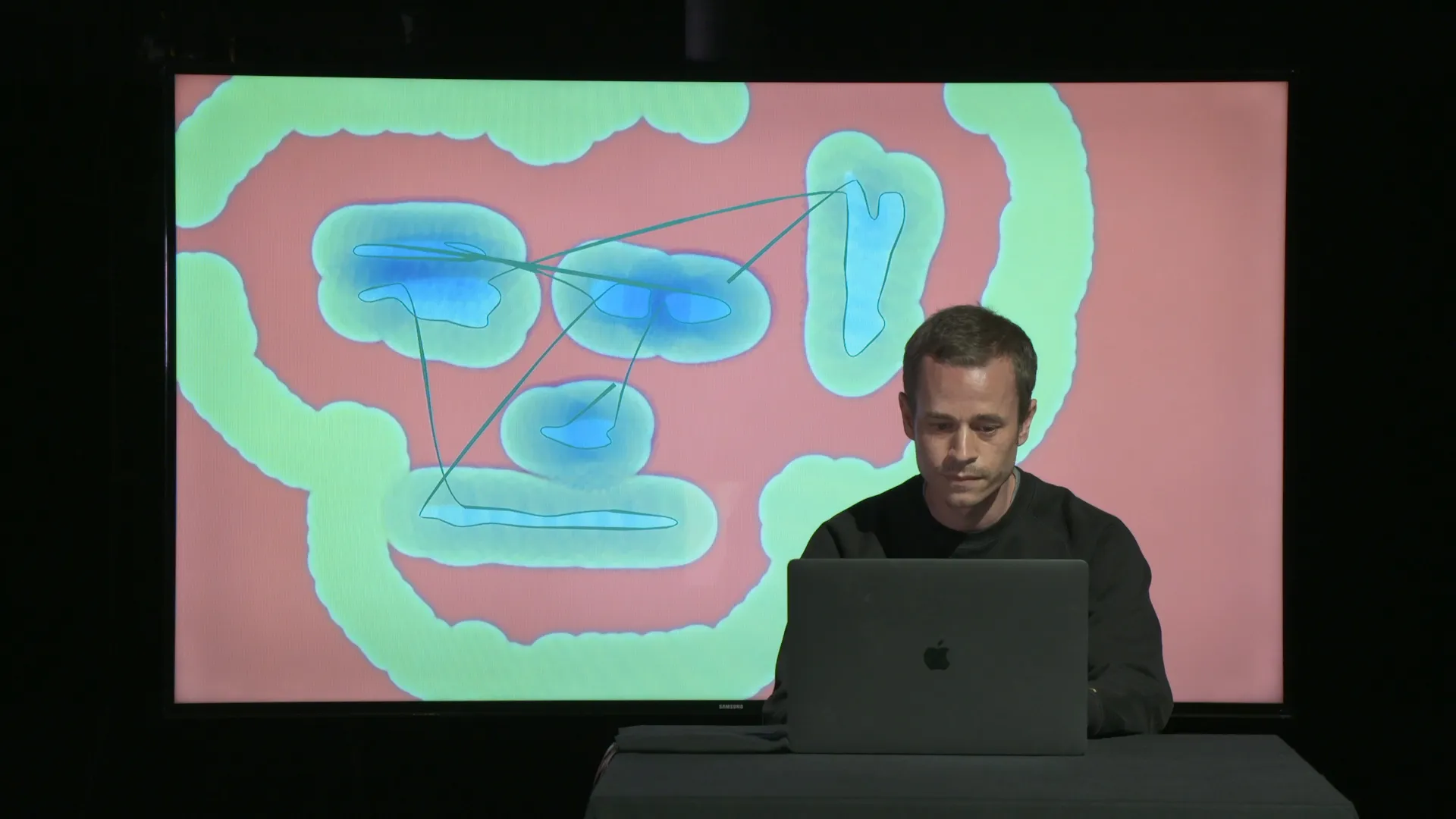
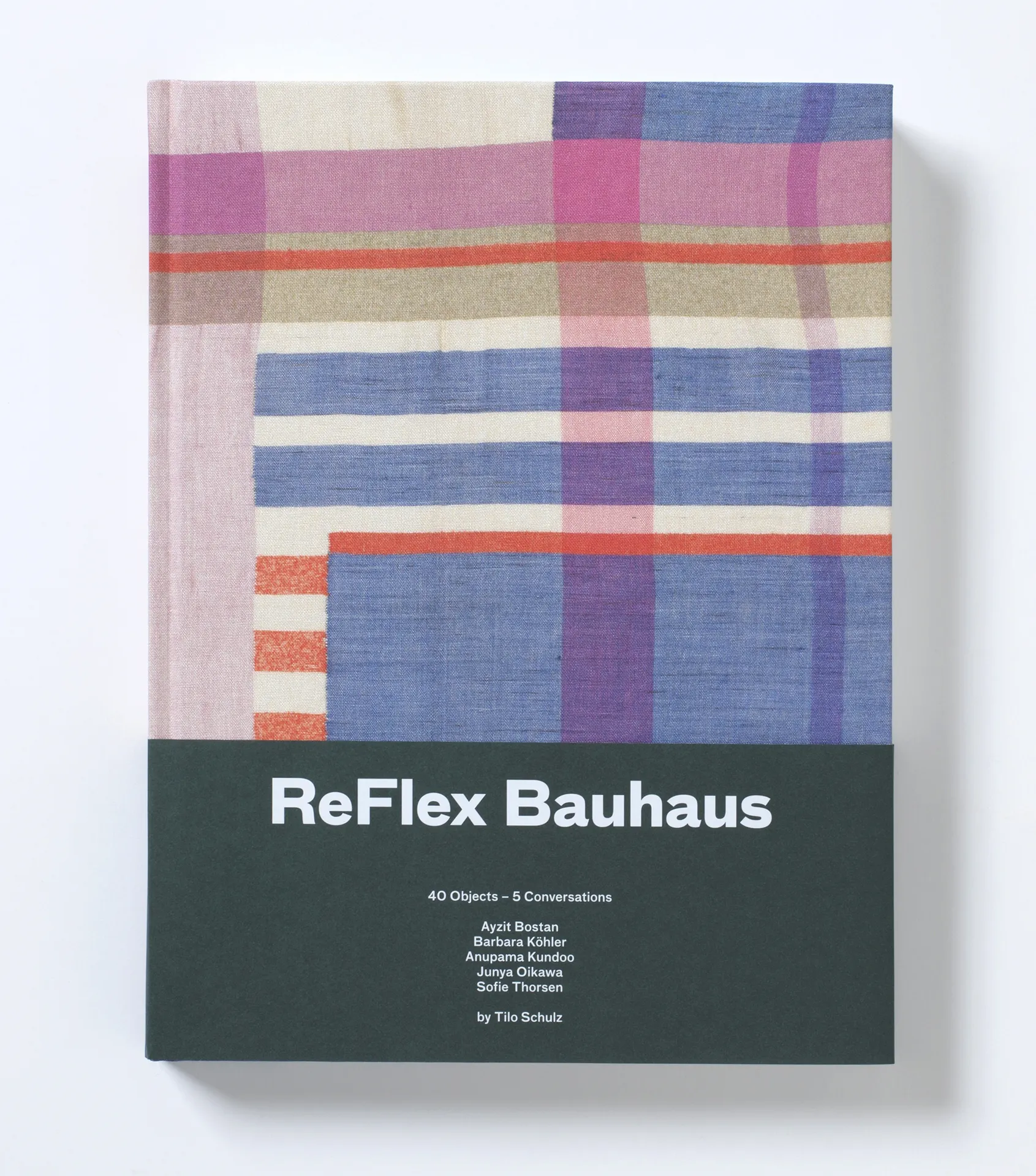
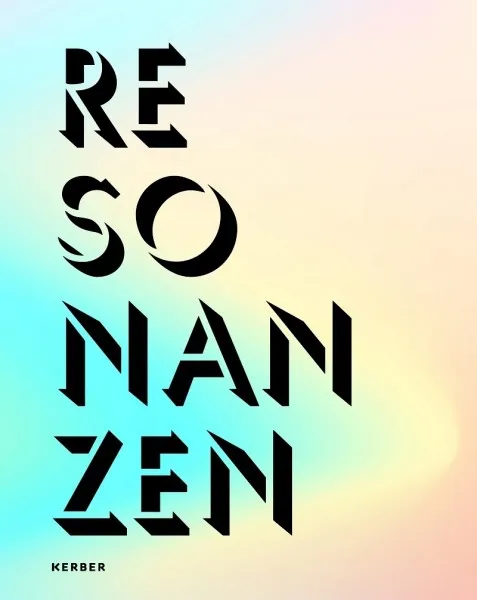
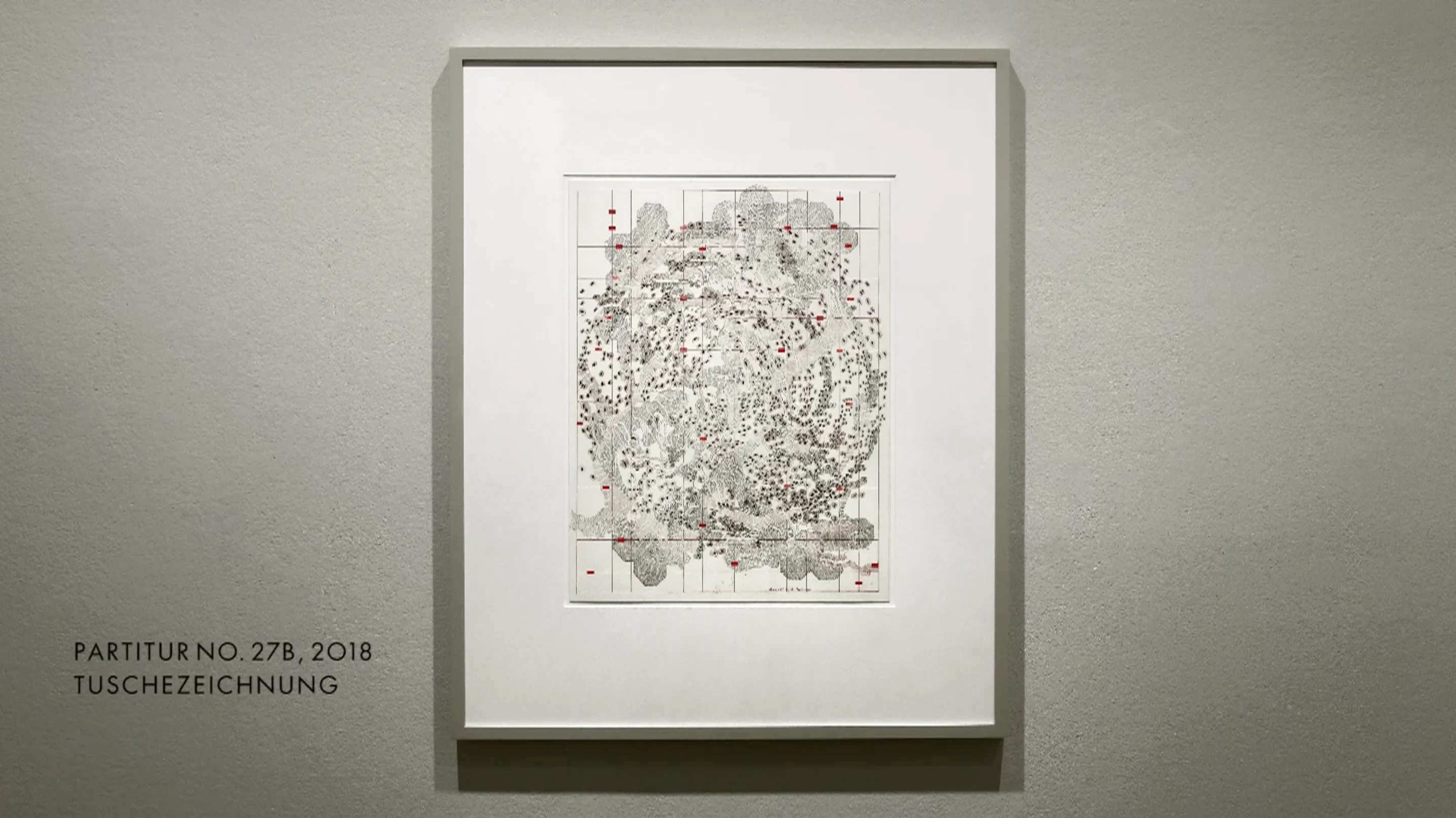
Through a computer-based process, Appelt's pen drawings are first digitized and transformed into grayscale images with inverted colors. Subsequently, a 90° counterclockwise rotation is applied, placing these digitized versions on a right-handed Cartesian coordinate system. Here, the X-axis corresponds to time, while the Y-axis represents the tonal frequency spectrum. The program then interprets the graphic score along the X-axis, synthesizing it into a digital waveform. The Y-axis pixel positions at time X align with the frequencies (pitches) of the synthesized vibrations. Moreover, the light-dark values of the pixels correspond with their amplitude (volume). This implies that higher pixel brightness signifies greater vibration amplitude. Sound, comprising tones and noises, encompasses frequencies detectable by humans in the audible range of roughly 20 Hz to 20,000 Hz (20 kHz).
The settings for the three existing scores encompass a spectrum ranging from 20 Hz to 1 kHz, embracing low bass, upper bass, fundamental, and midrange frequencies. This range encompasses the frequencies from the lowest tone of an electric bass to the highest note produced by the trumpet, the highest brass instrument.
Dieter Appelt is a major position in German art after 1970. His work has been recognized worldwide and can be found in the collections of renowned institutions including The Museum of Modern Art, the Metropolitan Museum, the Art Institute of Chicago, the National Gallery Berlin, the Centre Pompidou, and many more.
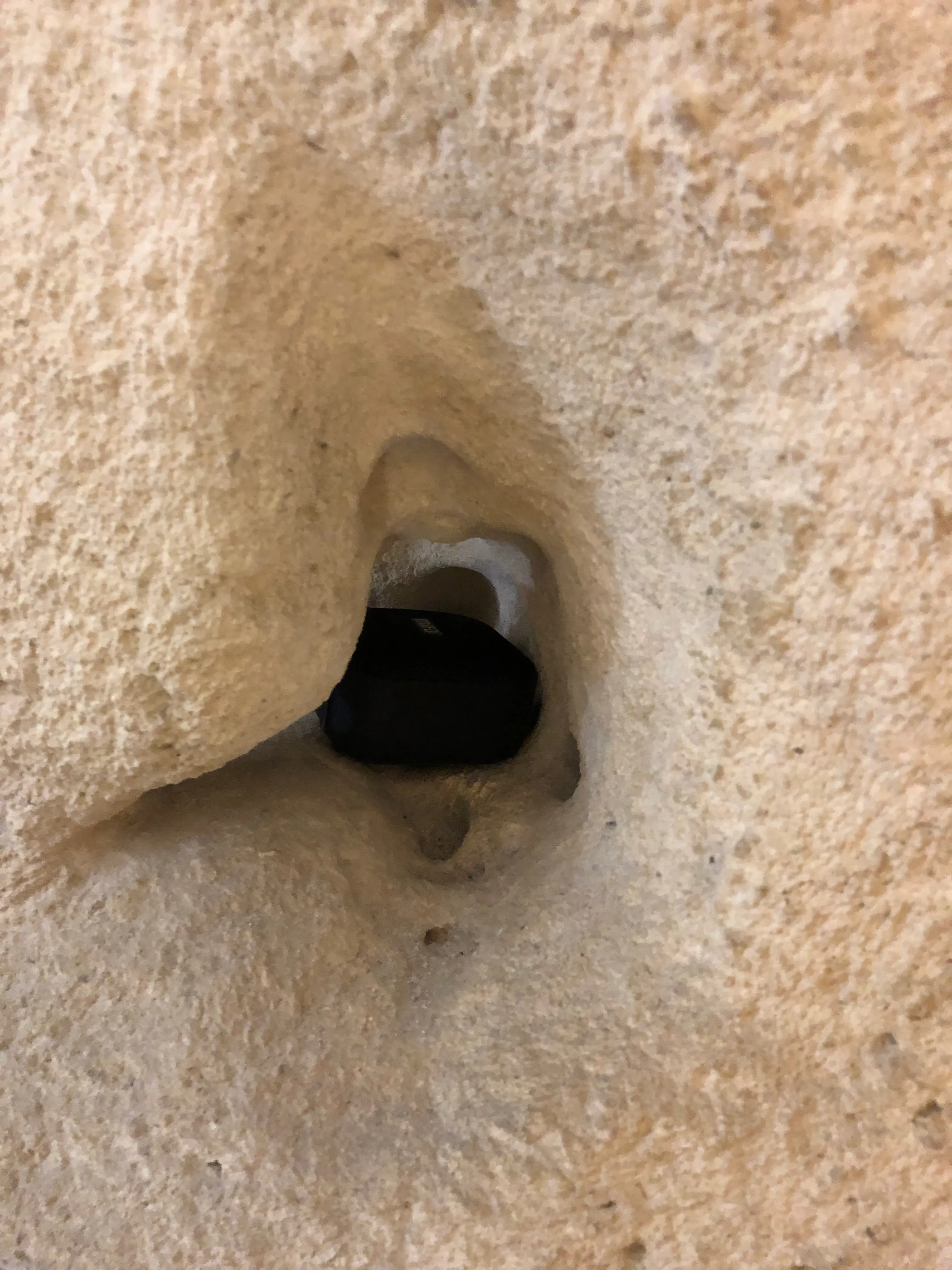
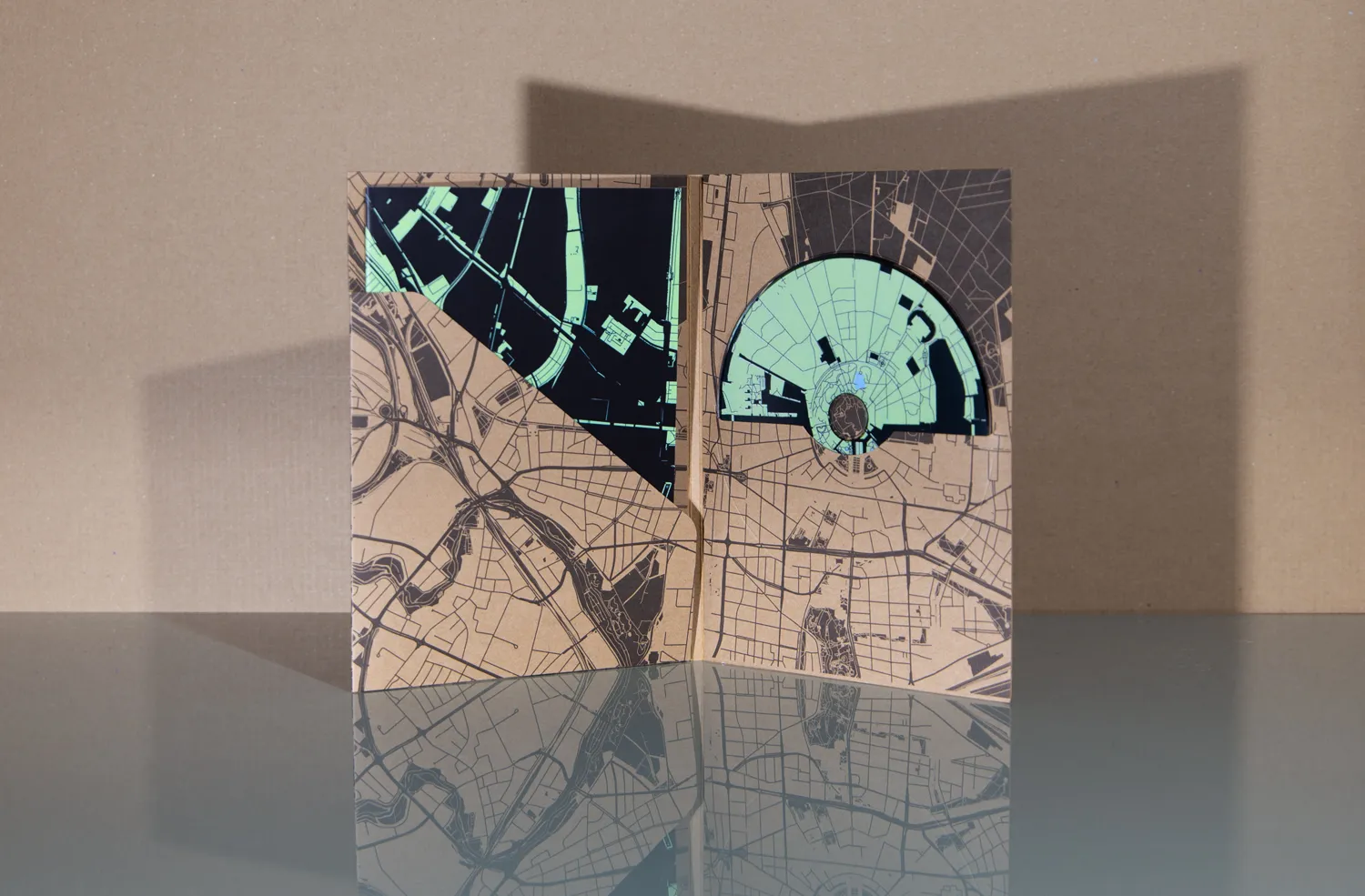
At ßpace, sound artist Lasse-Marc Riek skillfully wove naturalistic field recordings, noise, and soundscapes into a captivating live sonic collage. Meanwhile, the electronic duo Lintu + Røyk conjured live electronica through modular synthesizers at Halo ARS, broadcasting their mesmerizing creations from Karlsruhe's Oststadt.
In the Kaiserstraße pedestrian zone, KITeratur presented SYNONiMUS, an interactive performance, while the subterranean realm beneath ZKM's blue Cube resonated with the experimental sounds of the No Input Ensemble. At the ZKM, incoming signals underwent a kaleidoscopic metamorphosis, artistically processed across various spaces by Yannick Hofmann, Marco Kempf, Benjamin Miller, Barbara Nerness, Sebastian Schottke, and Dan Wilcox.
The ZKM Cube hosted an immersive sound installation. A unique interactive interface allowed KAMUNA visitors to sculpt soundscapes by manipulating audio data streams, employing interconnected sound alienators and effect pedals. Captured within the Cube's walls, the resulting audio amalgamation became an experimental 60-minute opus, ranging from Ambient to Drone, and Musique concrète. This sonic creation merged Lasse-Marc Riek's natural soundscapes, Lintu + Røyk's synthesized electronic sounds, KITeratur's particiaptory speech performance, and the ethereal orchestrations of the No Input Ensemble. The culmination of these elements transformed into an experimental collage, released as an Audio CD (Gruen 192) on the acclaimed German sound art label, Gruenrekorder.
Mix & Mastering: Sebastian Schottke
Software development: Dan Wilcox
Multi-room sound installation at ZKM: Marco Kempf (cube balcony), Benjamin Miller & Barbara Nerness (underground car park), Sebastian Schottke & Dan Wilcox (cube)
In-situ performances in Karlsruhe:KITeratur (Kaiserstraße, Musikhaus Schlaile), Lasse-Marc Riek (ßpace), Lintu + Røyk (Halo ARS), No Input Ensemble (ZKM, subspace)
Sound engineering: Christian Berkes, Daniel Höpfner, David Luchow, Marcel Mendel
Graphic design: Eric Jentzsch | dkm-graphik.de
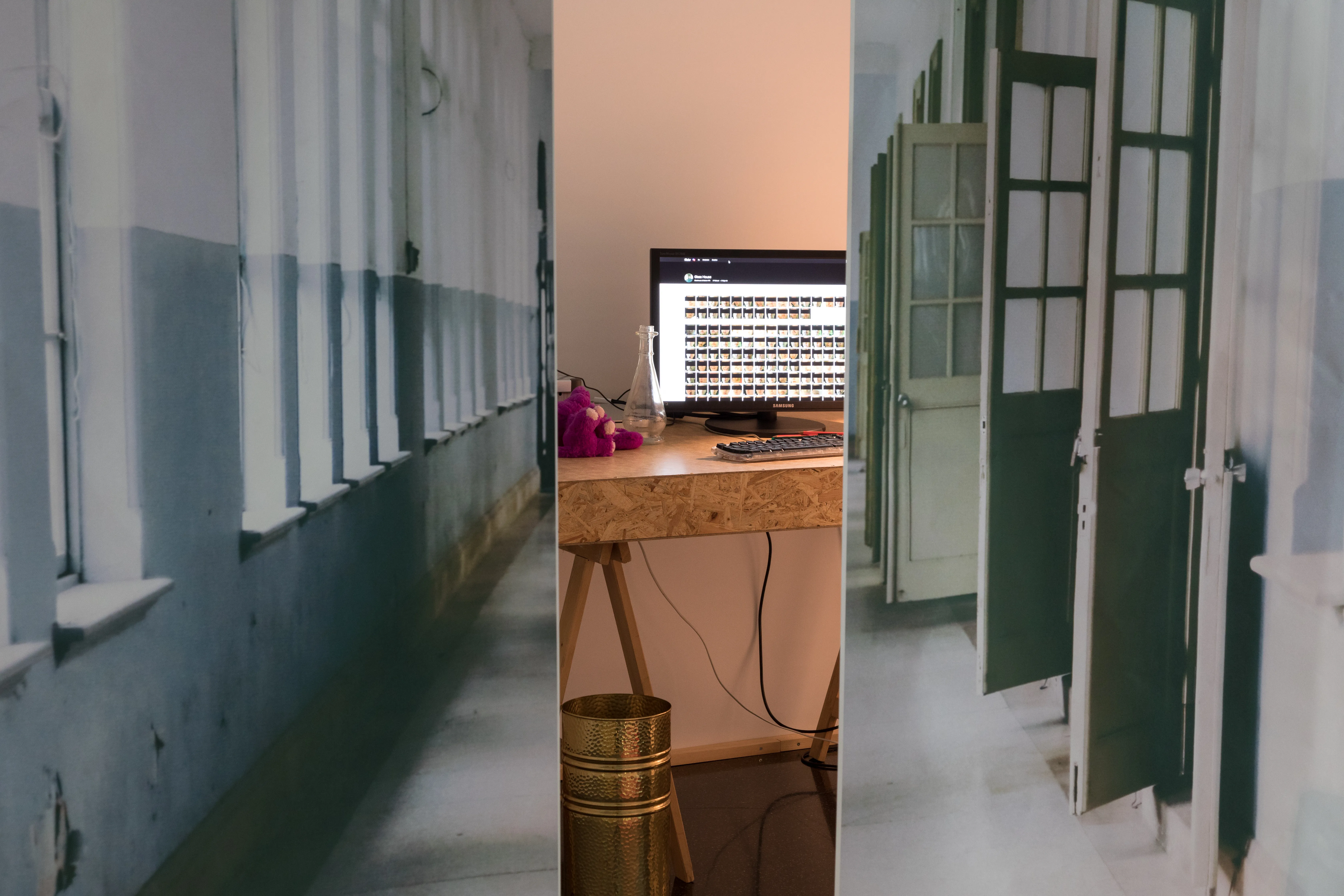
Glasshouse delicately illustrates the boundary between privacy and public exposure, inviting visitors to experience its dissolution through an inadvertent crossing. Within an artfully designed room, a sense of domestic privacy is conveyed. Yet, an inconspicuously concealed camera captures visitors as they enter, instantaneously uploading their photos to a social media profile's gallery. An identification algorithm pixelates faces, rendering individuals unidentifiable. As they step in, visitors are confronted with their uploaded images displayed on a screen positioned opposite the entrance. This interactive installation challenges the dichotomy of private and public, redefining the viewer's role in this ever-evolving dynamic.
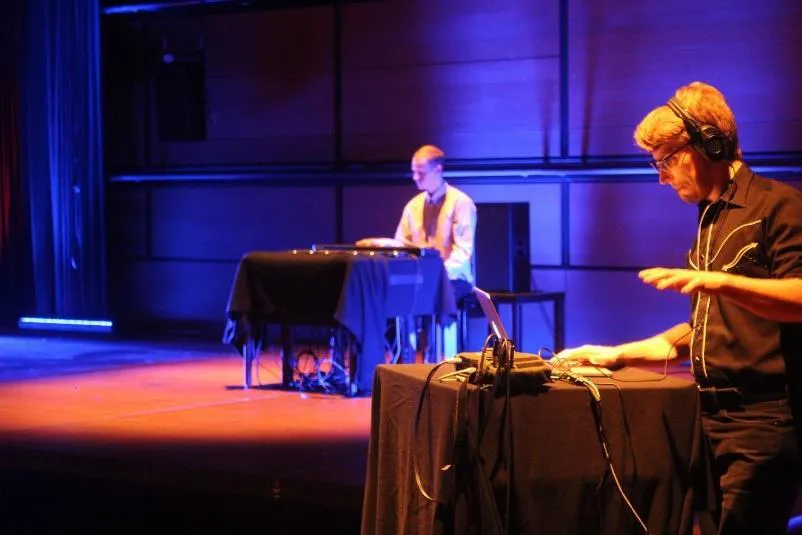
Yannick Hofmann, the media artist, captures the urban pulse with twelve thirty-second endless loop cassette tapes. Orchestrated on a MIDI keyboard, these tapes, each playing through a walkman, meld in a harmonious musique-concrète-like symphony, leveraging the twelve semitone steps of an octave as an interface.
Elizabeth Pich, both an artist and programmer, employs a modified version of her app "Code Chain." This innovative tool empowers real-time manipulation of eight chosen sounds through three tablet computers, an interactive exploration of auditory artistry.
Dan Wilcox, an American media artist and programmer, contributes an algorithm that sifts voice and sound signals from urban recordings, revealing the city's sonic essence.
Sound artist and creative coder Marco Kempf encapsulates 24 hours of sonic life, stretching back to January 6, 2016, into a thirty-minute electroacoustic soundscape-composition for Ambisonics. This immersive piece evokes a sense of auditory carpeting, intertwining art and technology.
Next City Sounds: Karlsruhe unites these narratives, inviting discerning audiences to immerse themselves in a multisensory exploration of the city's essence.
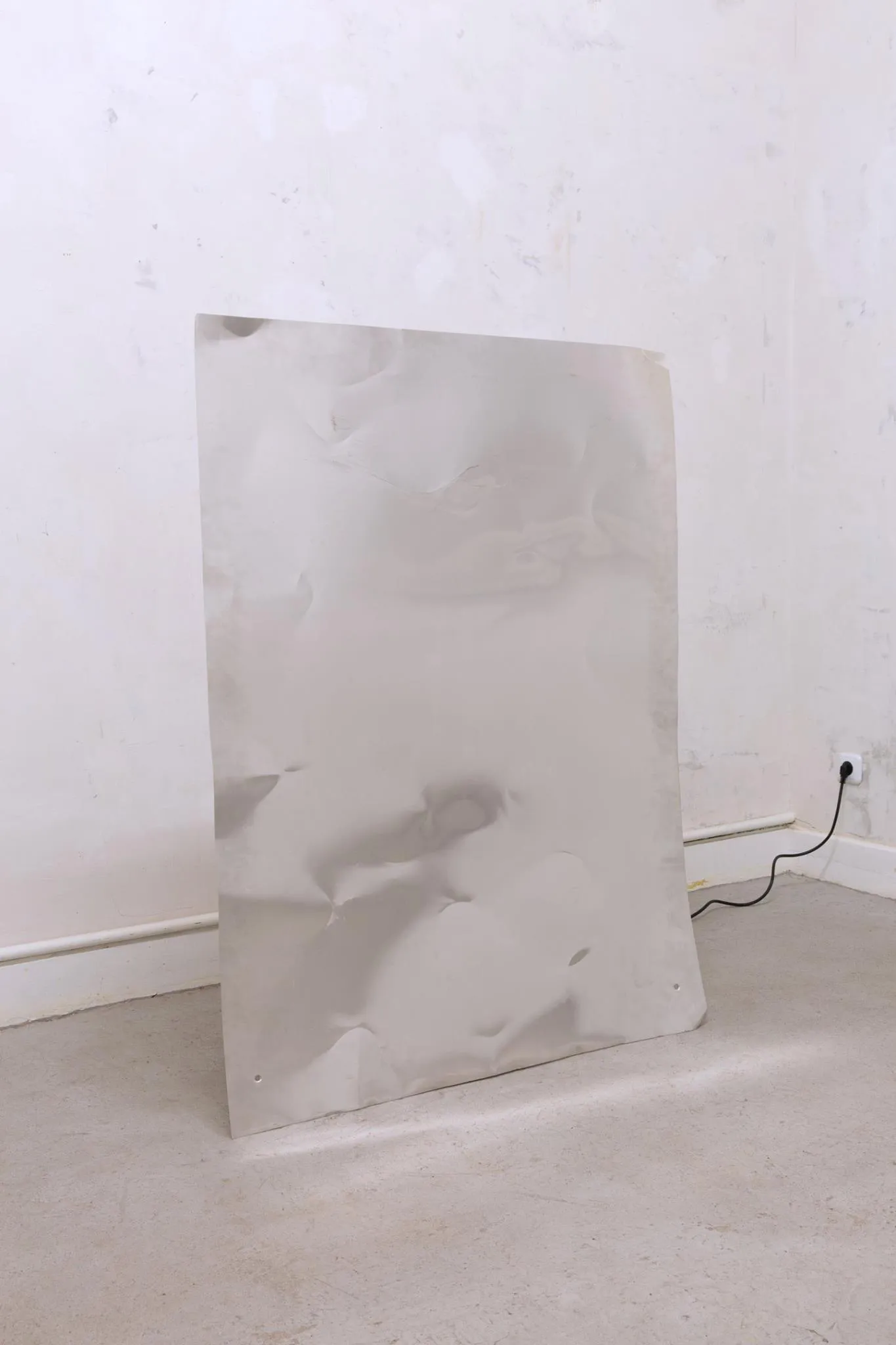
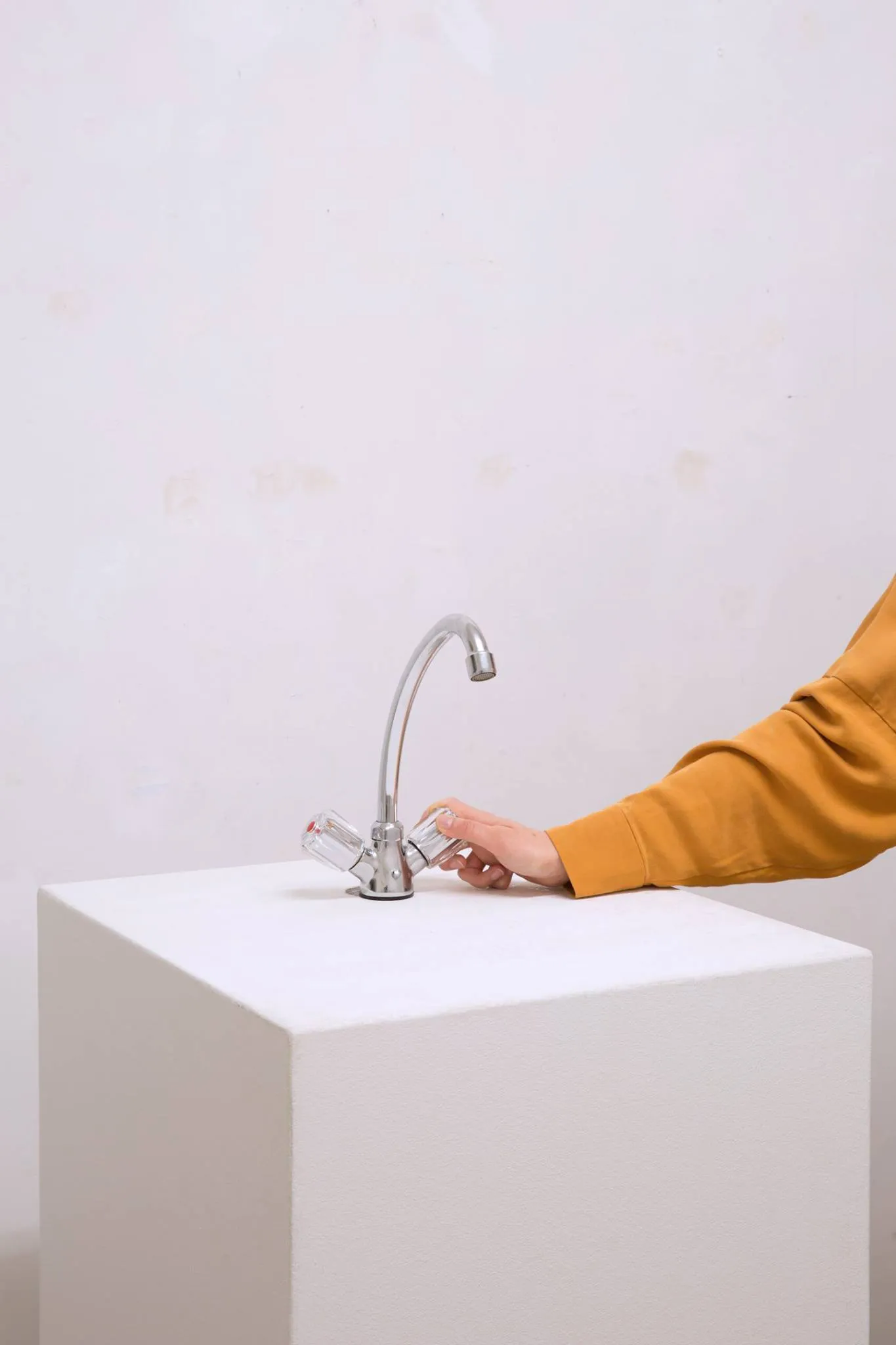
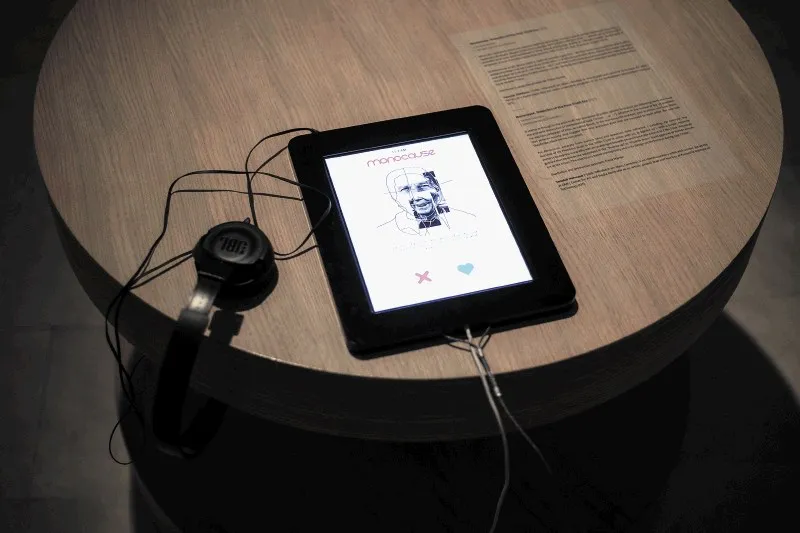
This project compiles snippets from diverse texts and speeches, including echoes of the Bush doctrine from the 2000s ("you're either with us, or against us"). In a mere swipe, museum visitors express affinity or aversion to personalities ranging from Adorno to Žižek. This gesture mirrors the Roman emperors' iconic "thumbs up" or "thumbs down" signals at the circus, encapsulating complex sentiments in a simple action. The interface, influenced by the Tinder dating app, conceptually and visually bridges past and present, beckoning us to ponder the power of binary choices in the nuanced realm of post-truth.
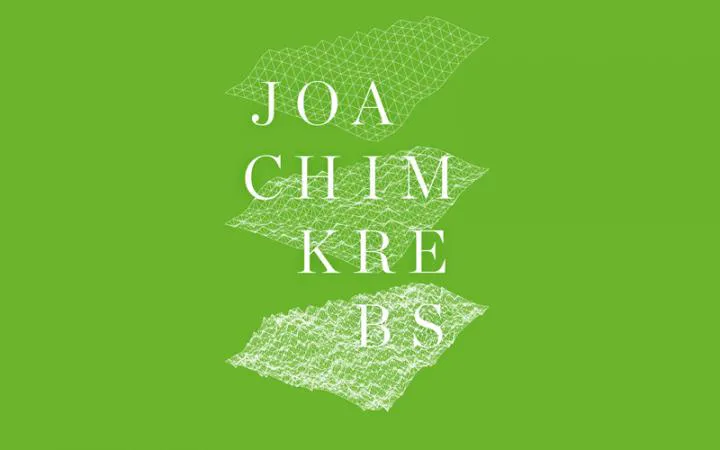
ZKM | Center for Art and Media Karlsruhe (DE)
"Sound art does not reproduce the audible, but makes audible." – <SA⁄JO>, 2012
The ZKM is dedicating a two-month retrospective exhibition to the oeuvre of composer and media artist Joachim Krebs (1952–2013), providing an insight into the artist's multifaceted and widely diversified work. The exhibition presents his early performances as a keyboard player in the agitative rock music drama group Checkpoint Charlie, musical-theatrical collages in the avant-garde context as well as multimedia installations/environments and radiophonic productions by the artist couple known as <sabine schäfer ⁄⁄ joachim krebs>.
After studying piano and composition at the Karlsruhe University of Music, Joachim Krebs composed award-winning instrumental music before he focused on electroacoustic music at the beginning of the nineties. From the mid-nineties Joachim Krebs used the sampler as an audio-microscope and applied an electroacoustic analytical and processing method ("EndoMicroSonoScopy") specifically developed by him. With that he transported formerly imperceptible melodies, harmonies and rhythms from sounds of animals and nature into the audible range. As the artist couple known as <sabine schäfer ⁄⁄ joachim krebs> (from 2009 called – <SA⁄JO>), from the end of the nineties Schäfer and Krebs developed and realized spatially overlapping installations and sound art projects. Inspired by the philosophy of French intellectual Gilles Deleuze, they dedicated their collaborative work to researching micro and macro dimensions in nature.
In addition to extensive audio and video recordings, (graphic) scores and original manuscripts from the artist’s estate, the stereophonic environment Sonic Lines 'n' Rooms No. 7 by <sabine schäfer ⁄⁄ joachim krebs> as well as a station for interactive audio-microscopy will be presented in the exhibition. Four audiotape pieces originating between 1995 and 1999 in the course of the Joachim Krebs project series Artificial Soundscapes will be presented for the first time in a binaural audio version through which a three-dimensional auditory impression can come into being by means of headphones.
To celebrate the acquisition of Joachim Krebs’ artistic estate, the concert In-Between Earth and Sky with selected works by the artist as well as a brief presentation by Sabine Schäfer will be held on the opening evening from 7 PM in the Badische Landesbibliothek. Within the scope of the event Media Lounge at Six at ZKM, on June 1, 2017 Sabine Schäfer will be giving the lecture Mikroskopischer Blick in den Naturklang to commemorate the microcosm and macrocosm of nature in the works of the artist couple
